 We often focus on fashion shows as a centre of analysis of the latest trends in colour and trend-setting fabrics, although we do not deny that it is on the red carpet of major events related to cinema, fashion or music where these trends crystallize, through impact looks that also influence what will be worn during one season or another. These costumes or dresses worn by the artists of the moment are not chosen at random – or not at all – but are also part of the machinery of the industry itself in order to define the main features of the season. Designers choose, celebrities wear thelook and consumers buy. Everyone plays a role in this ephemeral sector.
We often focus on fashion shows as a centre of analysis of the latest trends in colour and trend-setting fabrics, although we do not deny that it is on the red carpet of major events related to cinema, fashion or music where these trends crystallize, through impact looks that also influence what will be worn during one season or another. These costumes or dresses worn by the artists of the moment are not chosen at random – or not at all – but are also part of the machinery of the industry itself in order to define the main features of the season. Designers choose, celebrities wear thelook and consumers buy. Everyone plays a role in this ephemeral sector.
On a purely national level the red carpet of the Goya 2020 Awards was one of the most recent events, which highlighted an extensive cat-walk of trends with specific styles, couture, colours and fabrics. The event, apart from being the big night for Spanish cinema, is also important with regard to fashion, where many designers bring out their latest creations, each represented by his or her best muse. We analyze some of the trends, setting out the looks that impressed us most.

The return of the classic style
Never underestimate the power of classic style with elegant silhouettes of retro spirit, inspired by the outfits of old Hollywood glories. Actresses Marta Nieto, Belén Cuesta, Belén López or Andrea Duro have opted for this purist return with black and white styling, one of the most iconic and infallible duos that exist in fashion. And obviously they have triumphed stylistically on the red carpet.
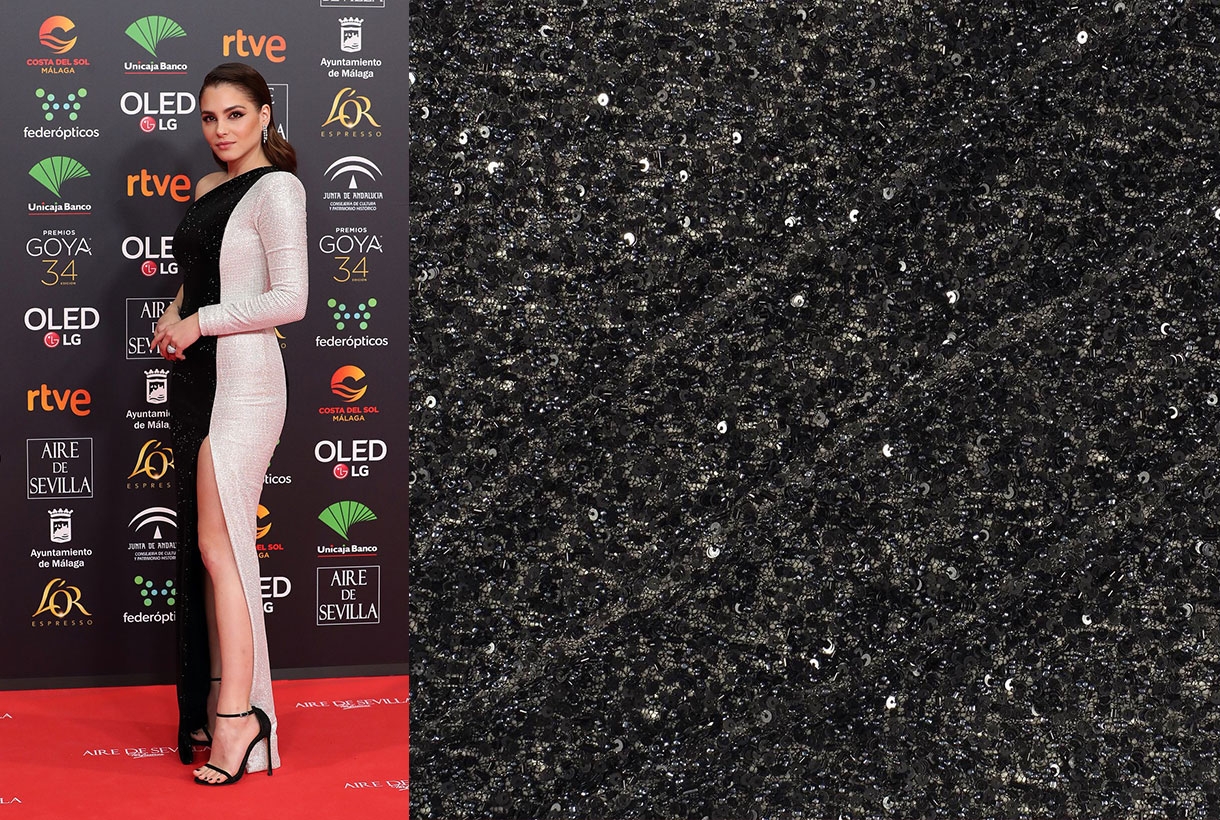
Andrea Duro wore an asymmetrical dress in bright black and white fabrics from Philosophy di Lorenzo Serafini. Belén Cuesta, Best Leading Actress for her role in ‘The Infinite Trench’, was without parallel in a twin-coloures Pertegaz dress of classic features. Highly commended for her elegance was the asymmetrical dress of Marta Nieto, nominated for the Goya Award for Best Leading Actress for her role in ‘Mother’ by Jorge Acuña. Another outstanding look was that of Belén López with Antonio García’s dress in ivory and black satin together with turtleneck in embroidered tulle with Swarovski crystals.

White too
White dresses, sometimes with slight shades of colour such as skin-tone, ivory or broken, were also a feature. Clear shades that ally with the neutral ones on a red carpet were no surprise in this edition, given their excessive colour. The splashes of colour , especially at the beginning of the red carpet, have been anecdotal, and it seems that the guests have found security in the neutrals, those recurring shades that are always infallible and that practically never go out of style.
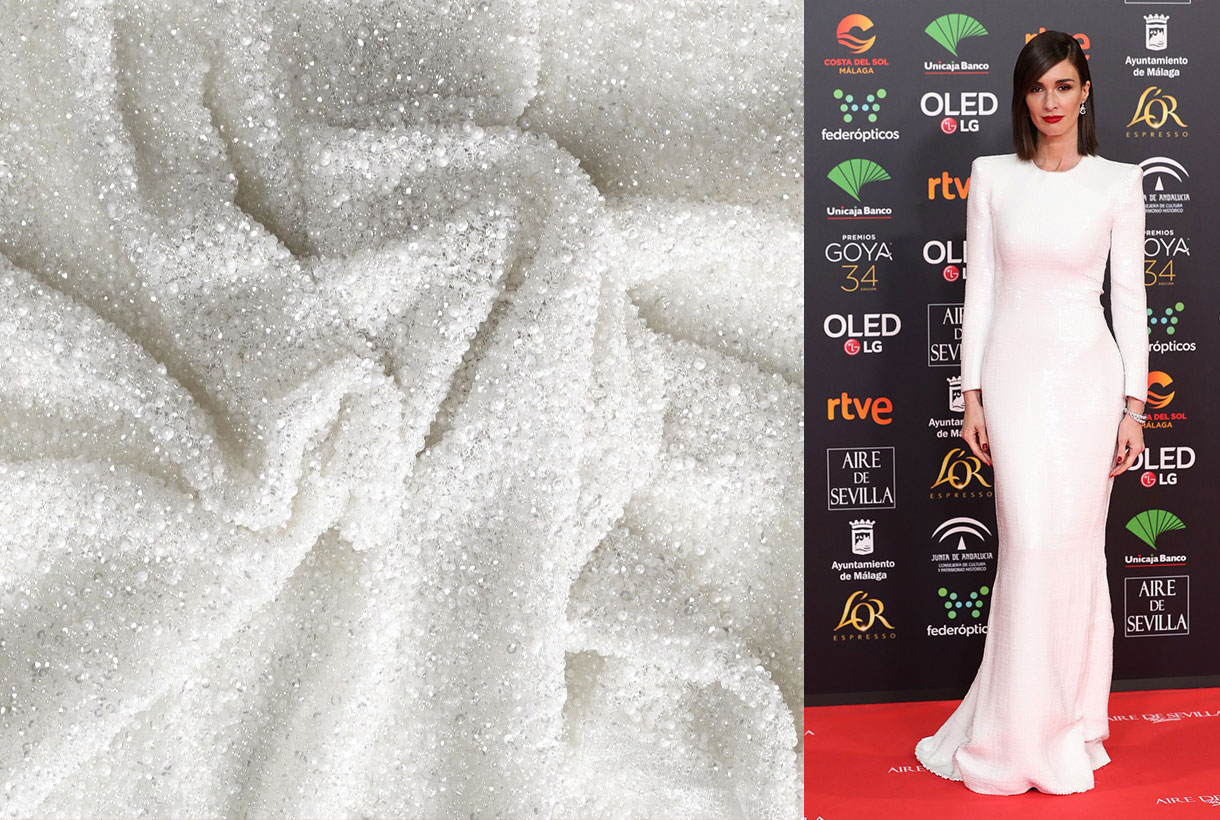
The actress Paz Vega wore white, with a design created exclusively for her with shoulder pads, mermaid silhouette and sequins for the final touch of brilliance. Barbara Lennie was also in a white dress with contrasting back tie by Carolina Herreraas was singer Najwa Nimri with lace dress by Loewe and swimmer Ona Carbonell with a plain model with pronounced front slit by Miguel Marinero.
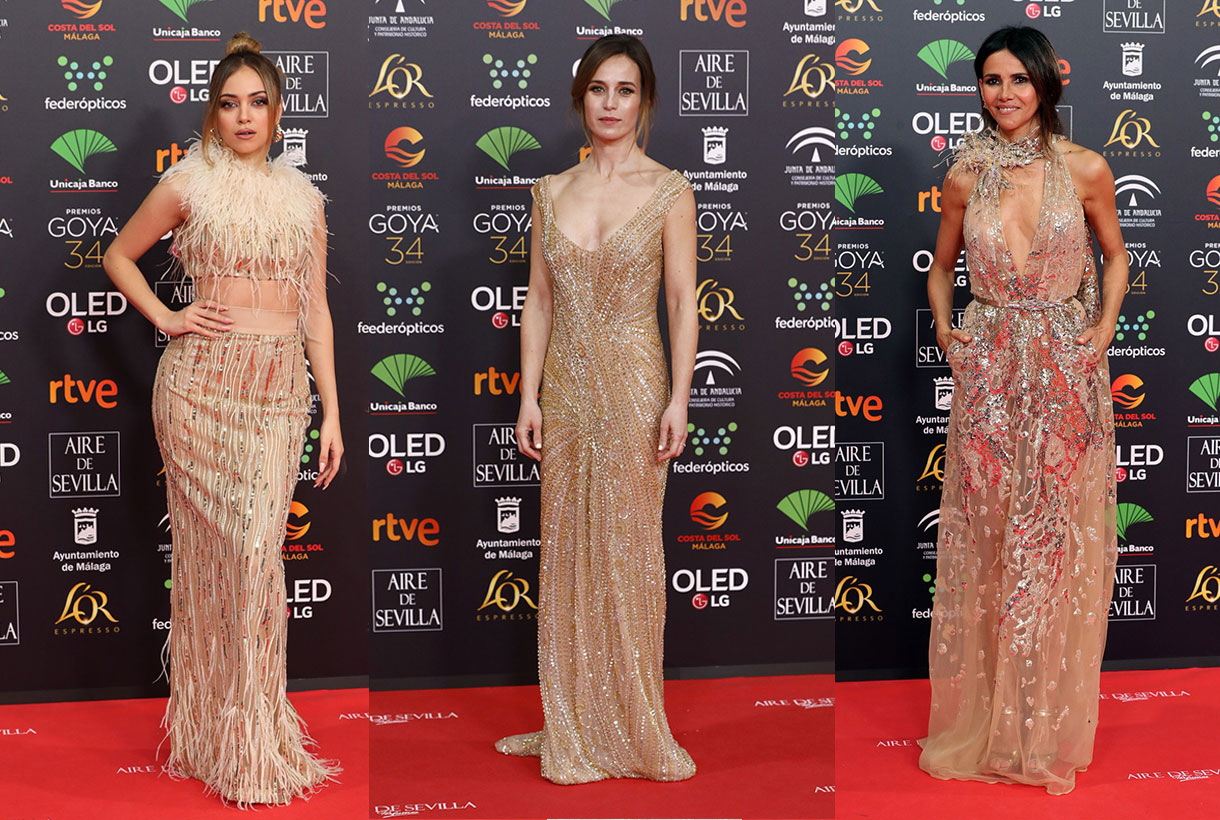
Sparkles in old gold
Within the neutral field metallic dresses stood out, especially those that opted for golden shades. To enhance their natural shine they were accompanied by sequins along with other details such as embroidery and feathers.

This tone linked to luxury and power was chosen by actress Clara Lago with a spectacular flake print dress by Oscar de la Renta Prefall 2019, Goya Toledo with embroidery and transparencies by Elie Saab, Marta Etura with a brilliant dress by Gabriel Lage and Ana Mena, who mixed sequins and feathers with a Rubén Hernández look.
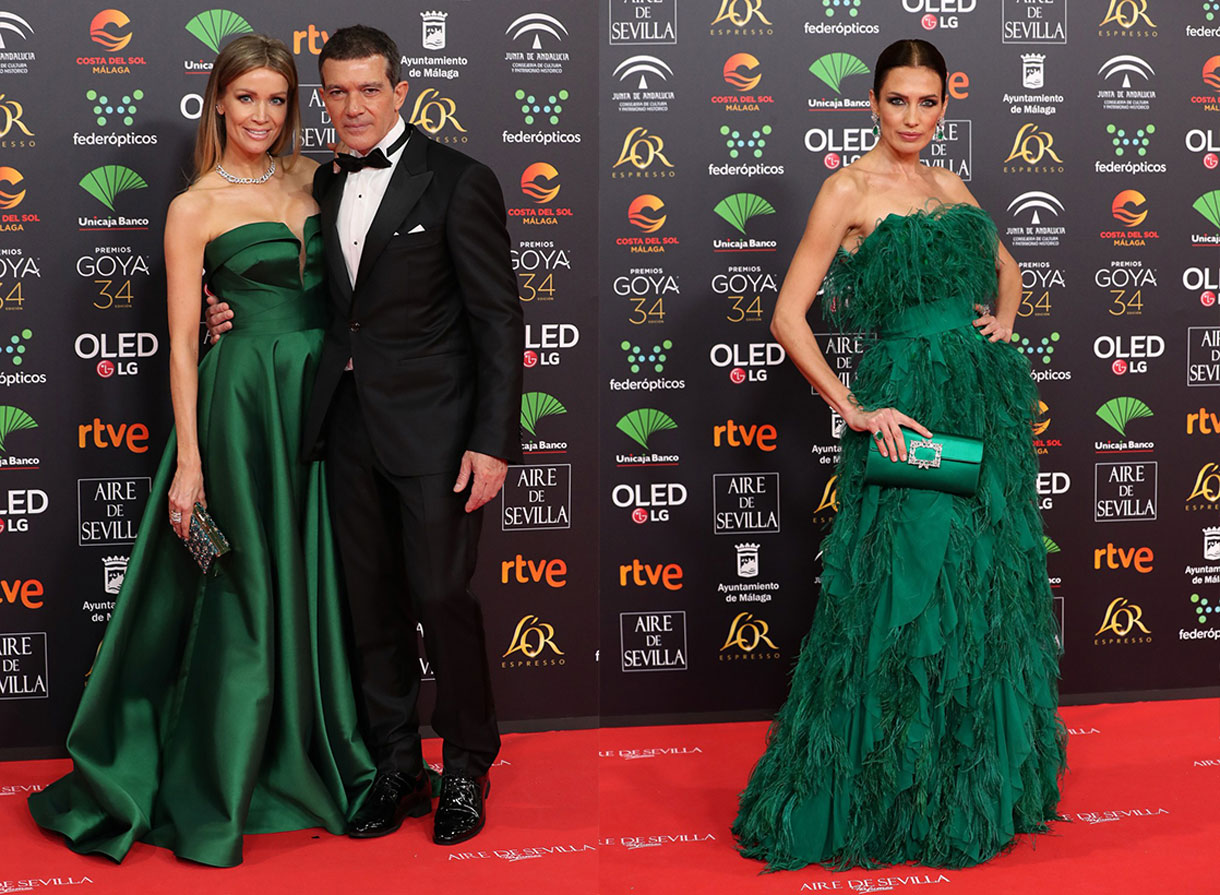
Emerald
Emerald green was, together with the colour red, one of the vibrant shades that dazzled on the red carpet of the Goya 2020. It is a hue that hides a powerful meaning since it has since time immemorial represented happiness, life and obviously, hope. It is a fresh and radiant shade associated with spring and, therefore, with youth.
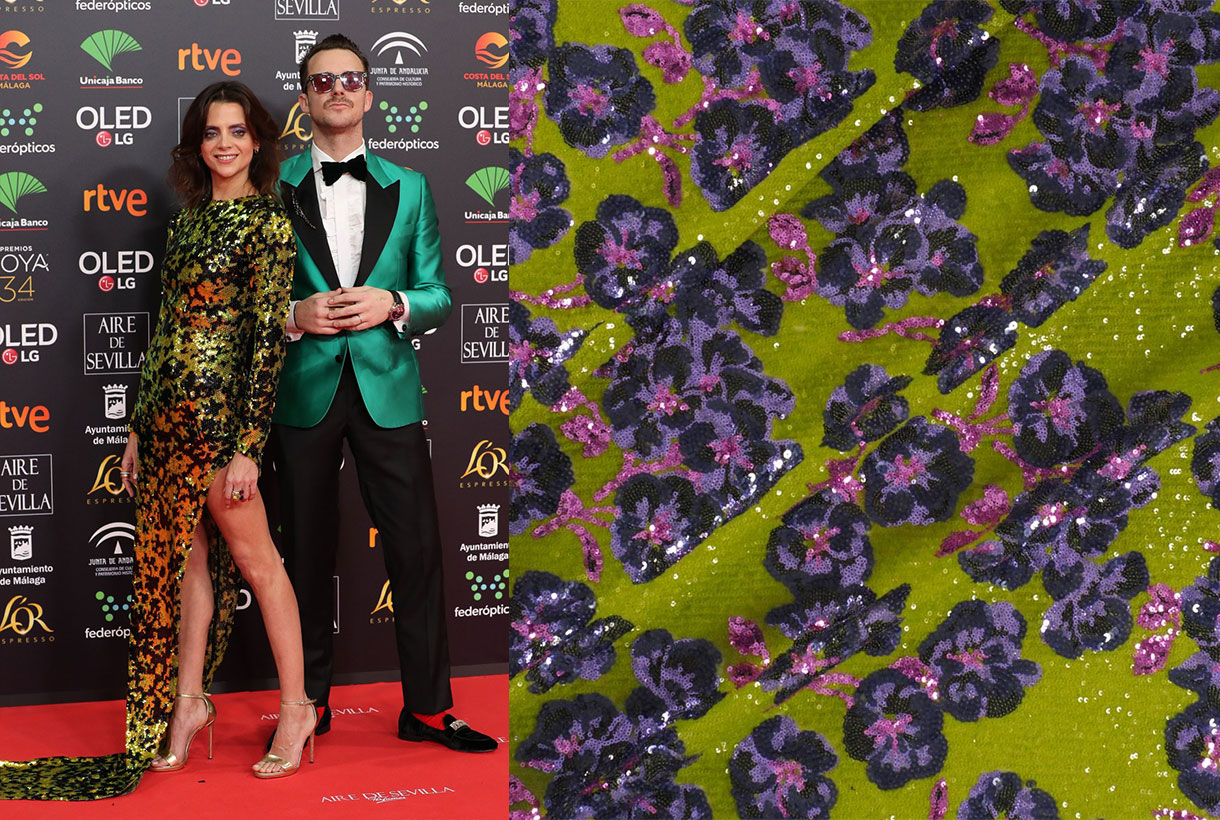
The most daring couple of the night, chromatically speaking, were actress Macarena Gómez with asymmetrical floral sequin dress by Teresa Helbig and her husband Aldo Comas with Avellaneda silk jacket, trousers and shirt by Loro Pianza. Nieves Alvarez wore emerald green with her innate elegance in a plumage type dress by Alberta Ferretti Limited Edition, as did Nicole Kimpel in a Pronovias word of honour dress.
Gratacós are also attaching some fabrics inspired by these looks so you can dream of making your own creation. Are you already imagining it?
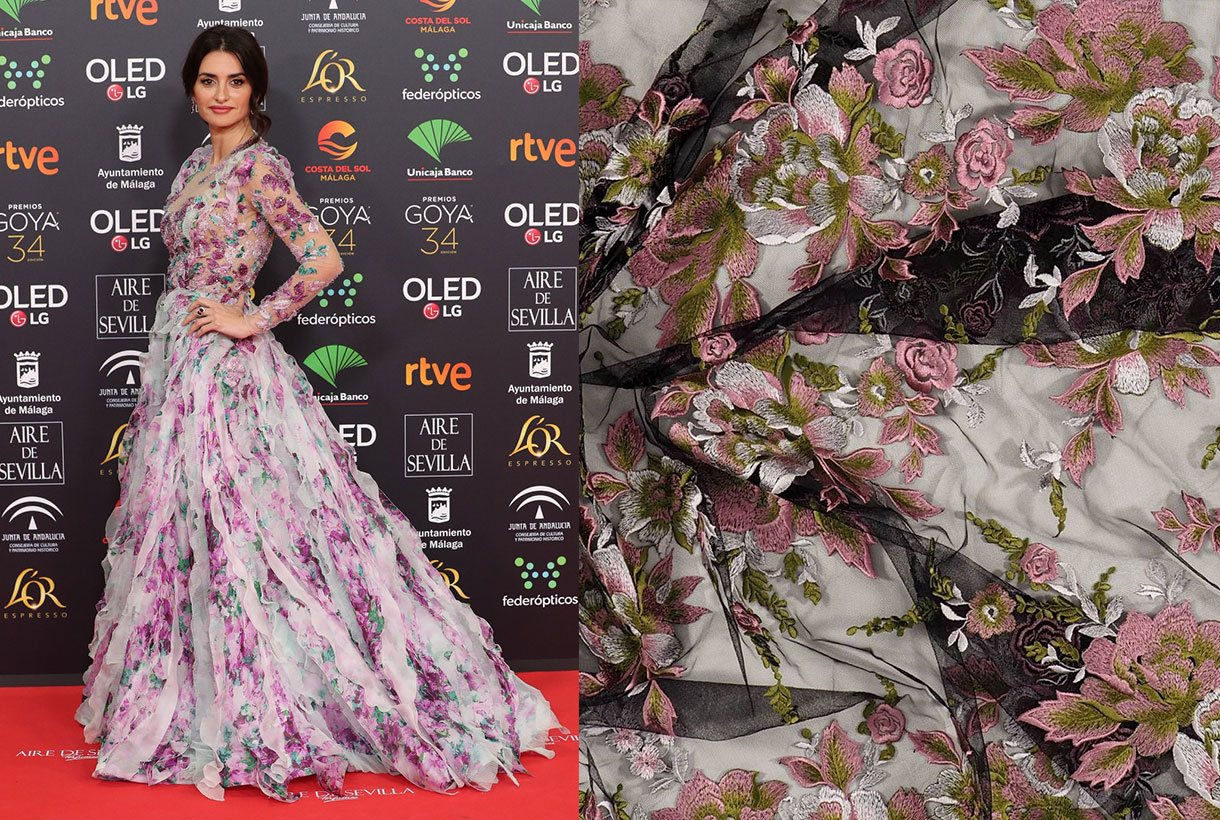



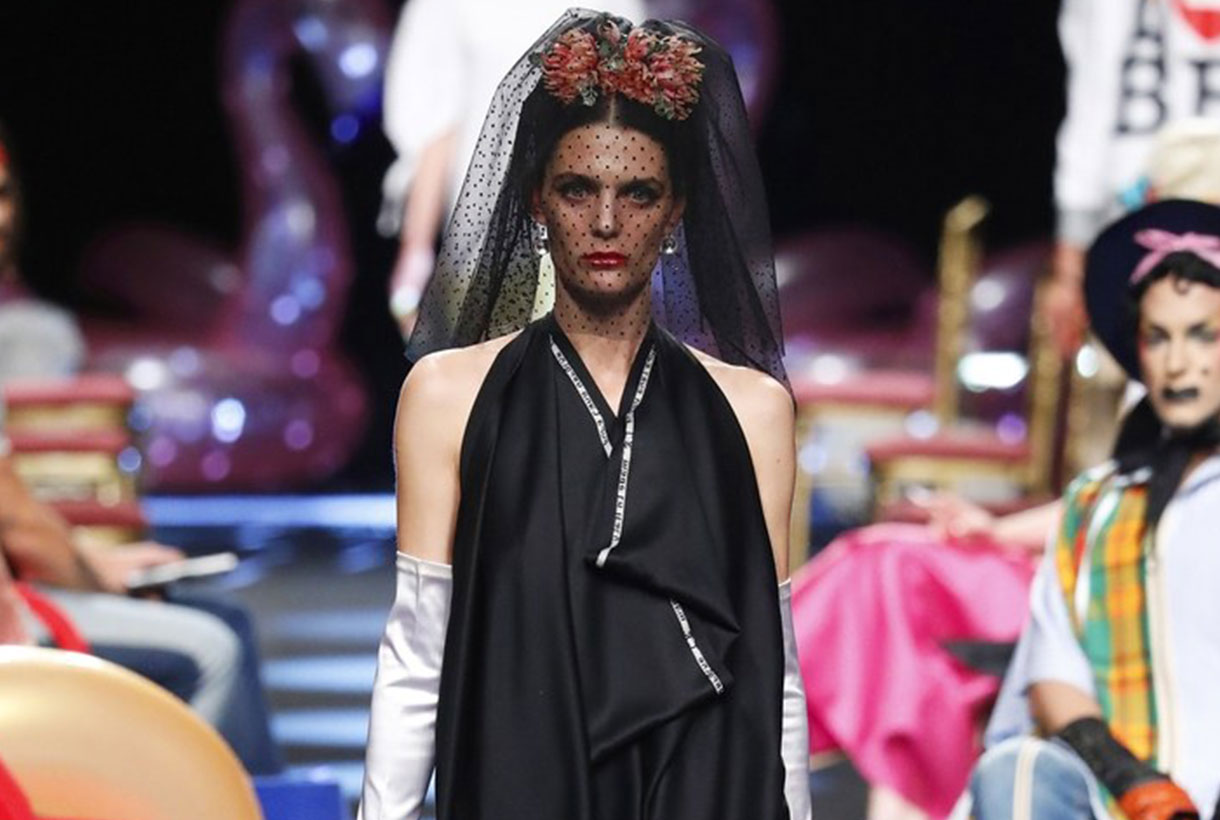
The catwalks of Madrid and Barcelona are both preparing their Spanish fashion week, where the best designers on the national scene will meet to present the Autumn-Winter 2020/2021 collections. As usual, at Gratacós we will be giving close attention to the new fabrics that will be presented on the catwalk in the form of original creations. Designers who trust in us always surprise us!
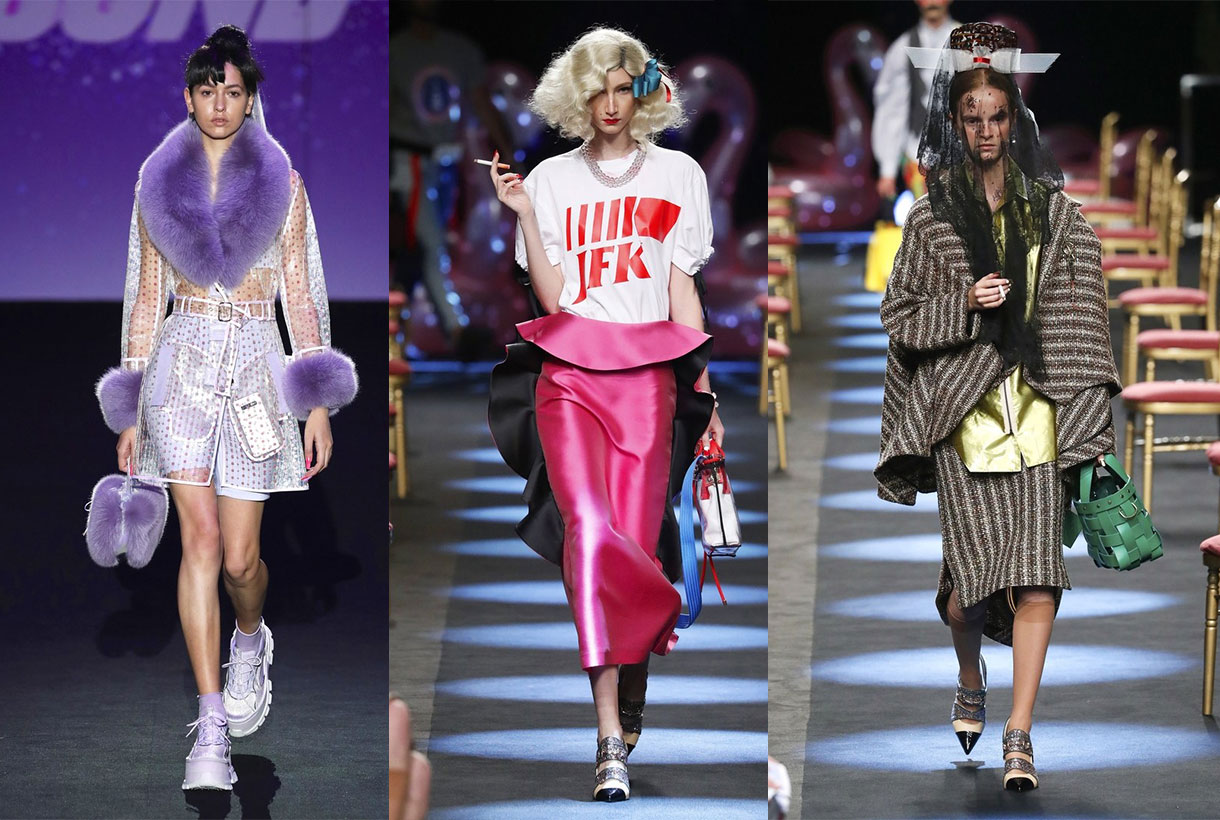
Mercedes-Benz Fashion Week Madrid
Mercedes-Benz Fashion Week Madrid is preparing a new edition with the participation of three key names in Spanish design that increase its range: the return of Pertegaz, which will the first time take to the catwalk and will do so with the signing of Galician fashion designer Jorge Vázquez; the Seville company Fernando Claro and Dominnico, which will be an extensive feature of the MBFWMadrid catwalk. These three companies are the highlights of the fashion event that will be held between January 28 and February 2 at IFEMA. Along with the new additions, the composition of the parade calendar is made up of 37 leading Spanish designers and brands such as Ana Locking, Devota & Lomba, The 2nd Skin Co, Agatha Ruiz de la Prada, Pedro del Hierro, Custo Barcelona, Angel Schelesser, Brain & Beast, Devota & Lomba , Andrés Sardá, Juan Vidal, among others. This edition of Mercedes Benz Fashion Week Madrid will also have a tribute to the designer Andrés Sardá, who passed away last September.
In this case, for the Madrid catwalk we will be following the Dominnico and Brain & Beast parades live and focus on the looks of Moisés Nieto, Mans Concept Menswear, Angel Schelesser, Ulises Mérida, Juan Vidal, Beatriz Peñalver, The 2nd Skin Co, Eduardo Navarrete and Teresa Helbig, who in turn will present the new designs for Iberia.
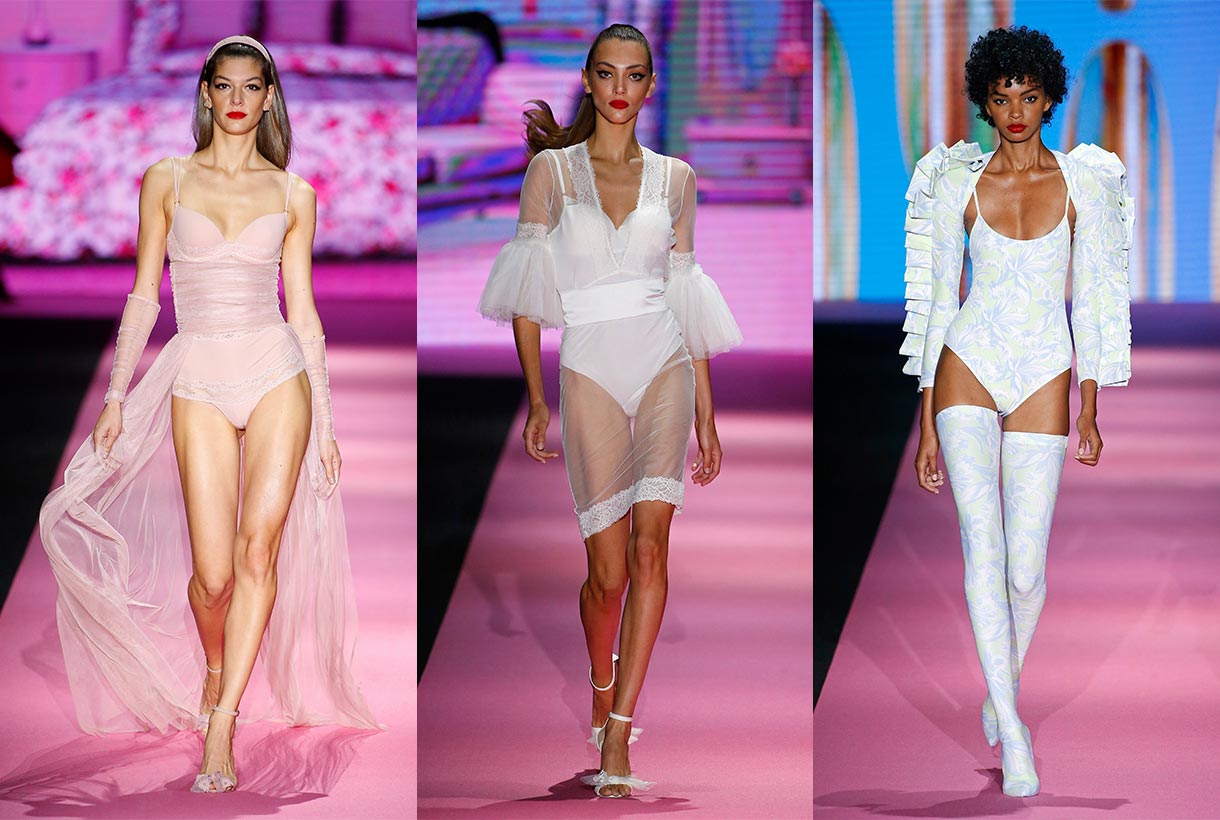
The Madrid catwalk will also pay tribute to Andrés Sardá , founder of the international lingerie firm, who died last September. The collection that will be presented is a tribute to his life, a review of the evolution of the company that forever changed intimate and bathroom fashion in Spain. The family firm took its first steps making shawls like the one Jackie Kennedy wore on her visit to Spain. Then they made the leap into lingerie and, in the 70s, to bathroom-wear. Women like Lady Gaga, Julianne Moore or Shakira have worn their creations. Luxury and comfort are the two key features of the company, headed today by Núria Sardá.
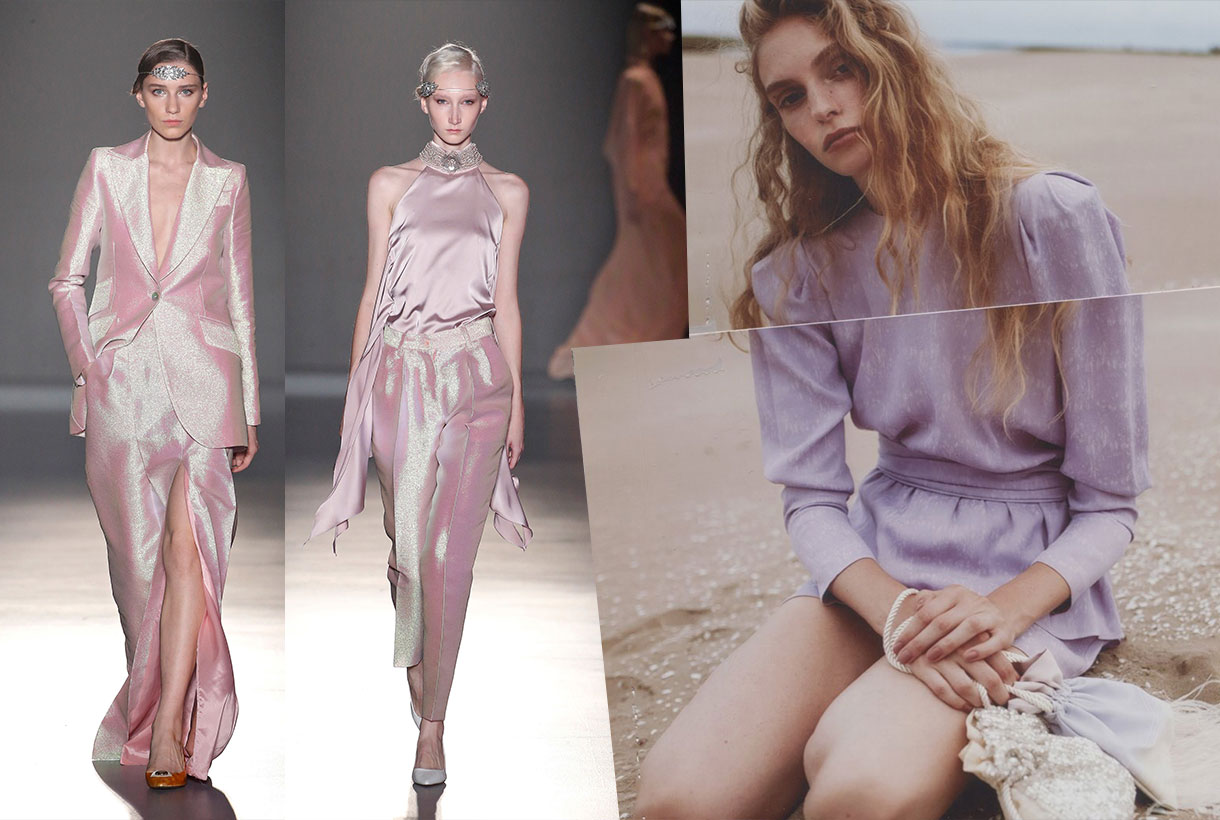
080 Barcelona Fashion
In Barcelona 080 Barcelona Fashion returns to its usual setting: the Sant Pau Modernist Venue that will incorporate new presentation formats in this edition, which seeks to be more international. Thus the latestt edition, that will take place from February 3-6, will feature prominent companies such as South Africa’s CHULAAP, the Asian-born Peruvian designer Esau Yori, the New York company Love Binetti, the designers Yiorgos Eleftheriades and Boris Bidjan, who will return to the parade in Barcelona after eleven seasons presenting his collections in Paris.
At Gratacós we will follow closely the new Menchen Tomàs collection inspired by the Manhattan of the 70s and the debut of Avellaneda with his range of feminine tailoring, and Eikò Ai , the company of the Barcelona designer Glòria Lladó. This brand will present Quantum One, a collection that takes as its reference quantum energy and the unity of the cosmos in its hand-made and locally produced design creations. We will see what they surprise us with!

If anything has defined us since our beginnings, it is our firm commitment to the windows that decorate the shop we have in Barcelona. We are aware that they are our cover letter, the first visual point of attraction and “conquest” of the customer and represent a unique opportunity for designers’ creativity to flow hand in hand with our seasonal fabrics, creating dreamlike scenarios. Faced with this expectation, who can resist letting the imaginative madness of current fashion designers flow? Moreover, we like them to experiment, surprise and captivate us at first sight. An innovative staging of Gratacós fabrics in combinations that exceed our expectations. Moreover, the more disruptive the shop-front is, the better!
In 2019 we had the support of several artists who left their mark via our shop windows and to close last year, we want to recall them with a small tribute. Do you have any favourite? What did you like most? We review the most prominent:
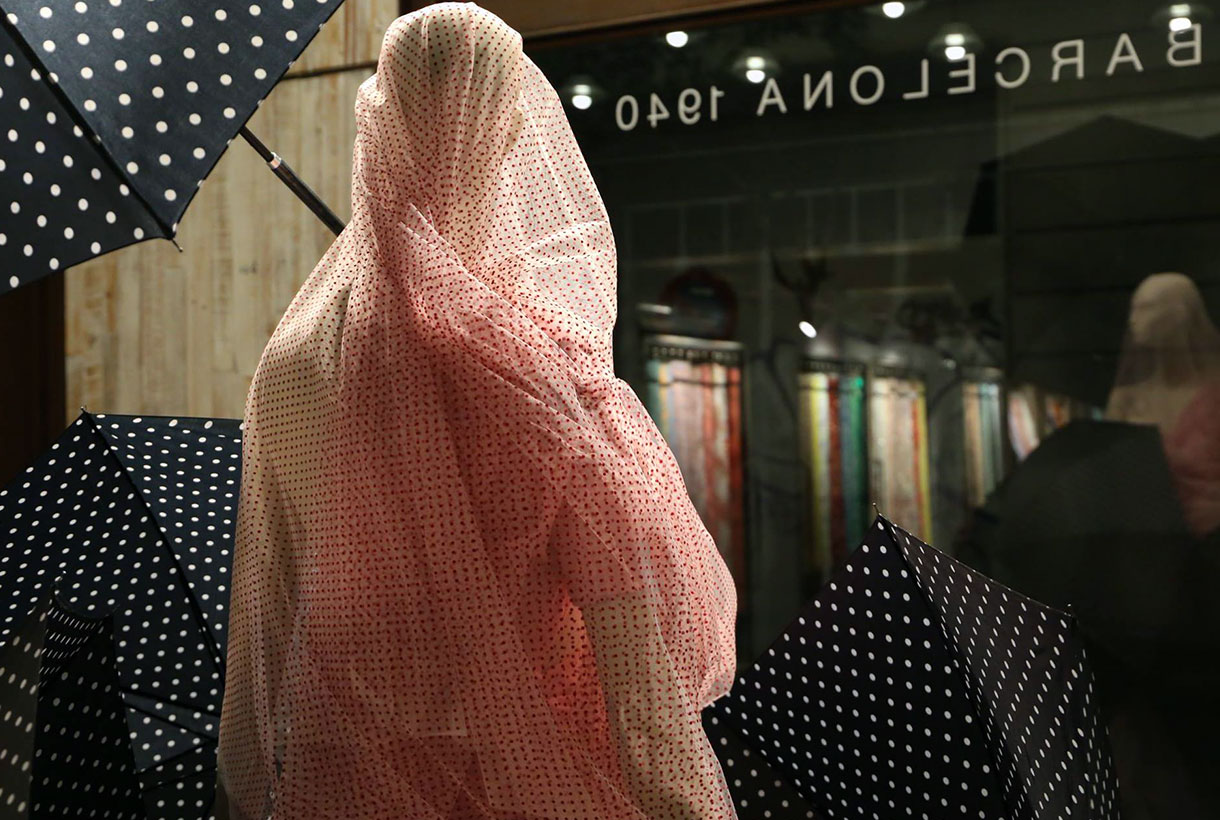
February 2019. Rainy weather
Rain was the main feature of the most ephemeral month of the calendar in a work signed by Antonio Iglesias.The Barcelona interior designer wrapped the mannequin in a delicate plumeti tulle in pale pink to give it a fragile and nostalgic hue, in contrast to the black umbrellas with polka dot pattern that accompanied the model. A colour contrast with the same common denominator: patchwork.

March 2019. The floral awakening
The beginning of spring marked the theme of a floral showcase that coincided with the presentation of the new fabric season. Antonio Iglesias captured the essence of all this renovation via a shop window in pink tones in which a tulle curtain with inserted petals surrounding the mannequin stood out, dressed in one of the most successful floral crepes from the last collection.

April 2019. Bridal Moulage
April is the month of brides and at Gratacós we reserved this shop-front for one of the winners of the moulage competition among IED Barcelona wedding dress design graduates. A unique opportunity to publicize the work of the new generations in bridal design. In this case it was the student Katia Combatti who developed a spectacular wedding dress with large volumes on the sleeves, following the steps of this unique cutting and sewing technique.
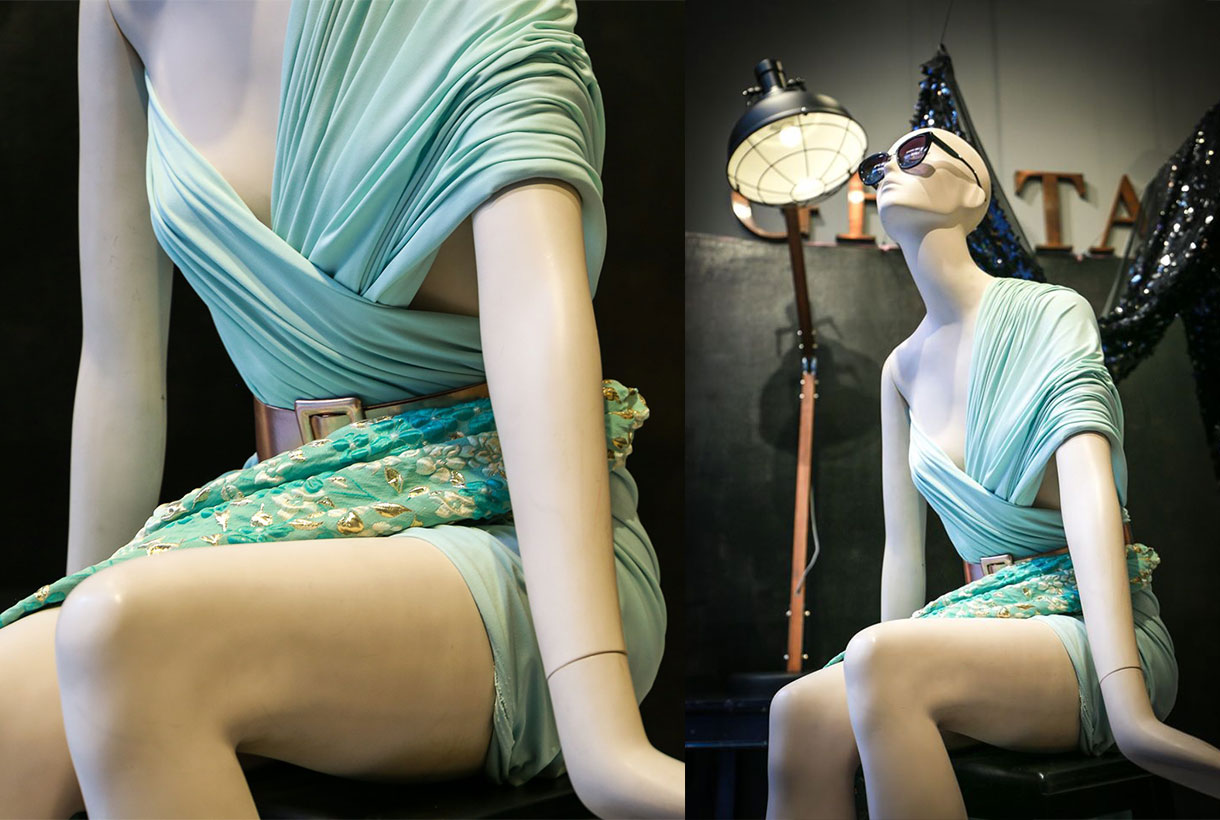
May 2019. Fashion illustrated
When fashion dialogues with other disciplines such as illustration, you can find creatives as fascinating as the one that Joel Miñana prepared in order to showcase the month of flowers. The renowned Catalan illustrator, capable of capturing the essence of fashion moments that escape photography, showed how he wanted the mannequin to be dressed: with textured fabrics contrasted in greenish tones and modern complements. Just take a look at the results!
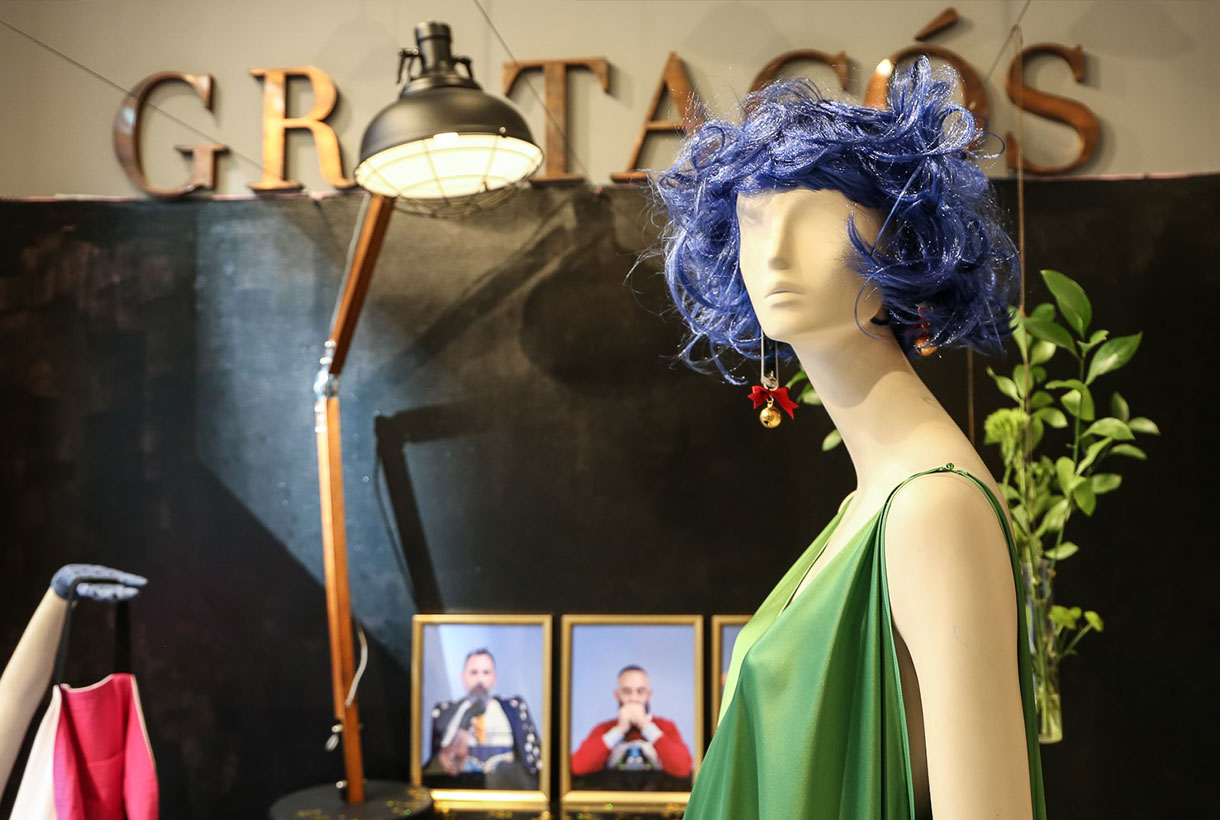
June 2019. Brain & Beast Essence
Ángel Vilda, designer and most visible face of Brain&Beast transformed the Gratacós shop-front into one of his creative illusions, marked by the criticism and dualities that his rebellious streak loves to play with. There was no lack of elements of popular culture, contrasting colours and a luxury of detail that is part of the unique Brain & Beast universe. Anyone who is familiar with them knows full well what to expect…
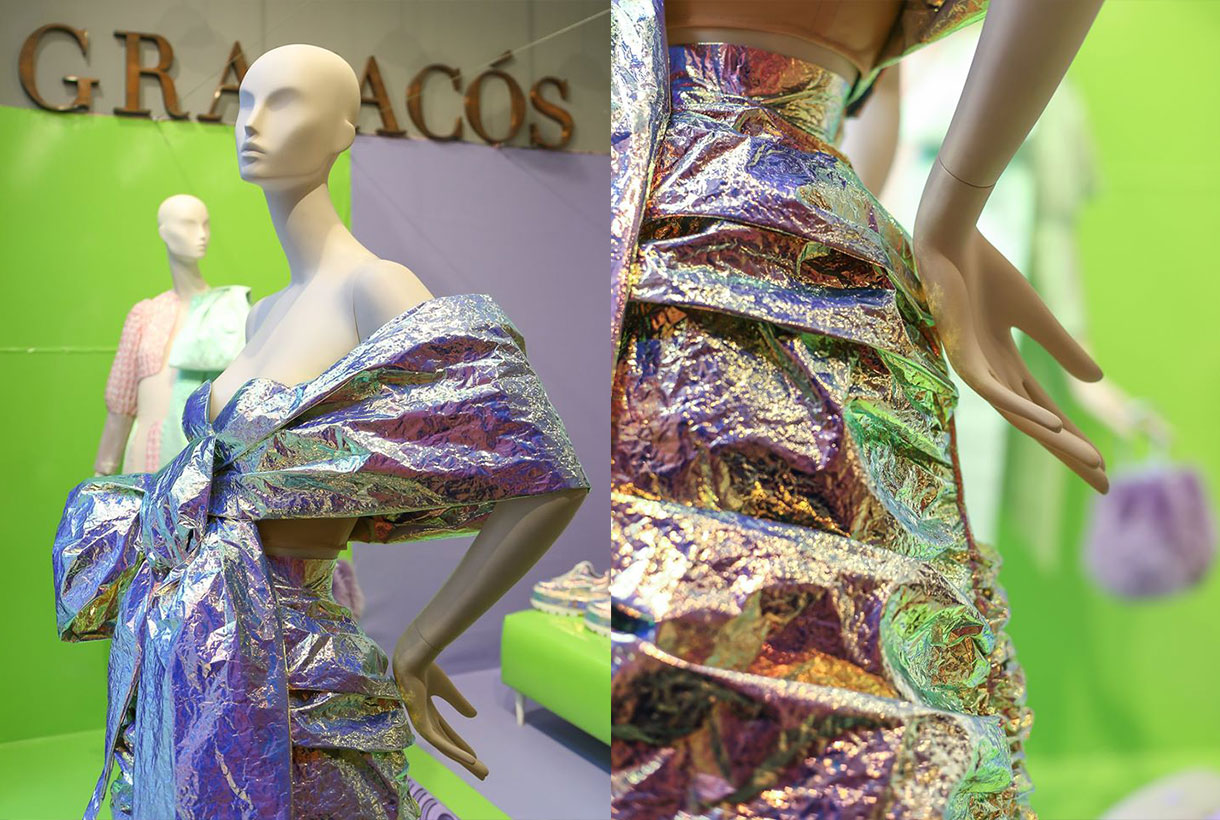
September 2019. The Dominican Harajuku Kids
2019 has been the year of take-off for Dominnico. Apart from his collaborations with Rosalia, the young designer from Alicante, in July he won the Mercedes-Benz Fashion Talent award from among the young companies that parade in the EGO of Cibeles. The award-winning ‘Harajuku Kids’ collection, inspired by the histrionic urban tribes of Japan, was made with some of the most special fabrics from the last spring collection. The shop-window reproduced some of the key looks of this surprising creation.

November 2019. Youth Eclecticism
At Gratacós we like to give an opportunity to new talent. That is why our shop-front is also sometimes an experimental support where it is the young talents who set their own limits. Design students from the Institut Català de la Moda (ICM) created an eclectic showcase of some of their most identifying outfits with amazing fabrics from the current autumn-winter 2019/2020 collection. A creation that was both fresh and eclectic.
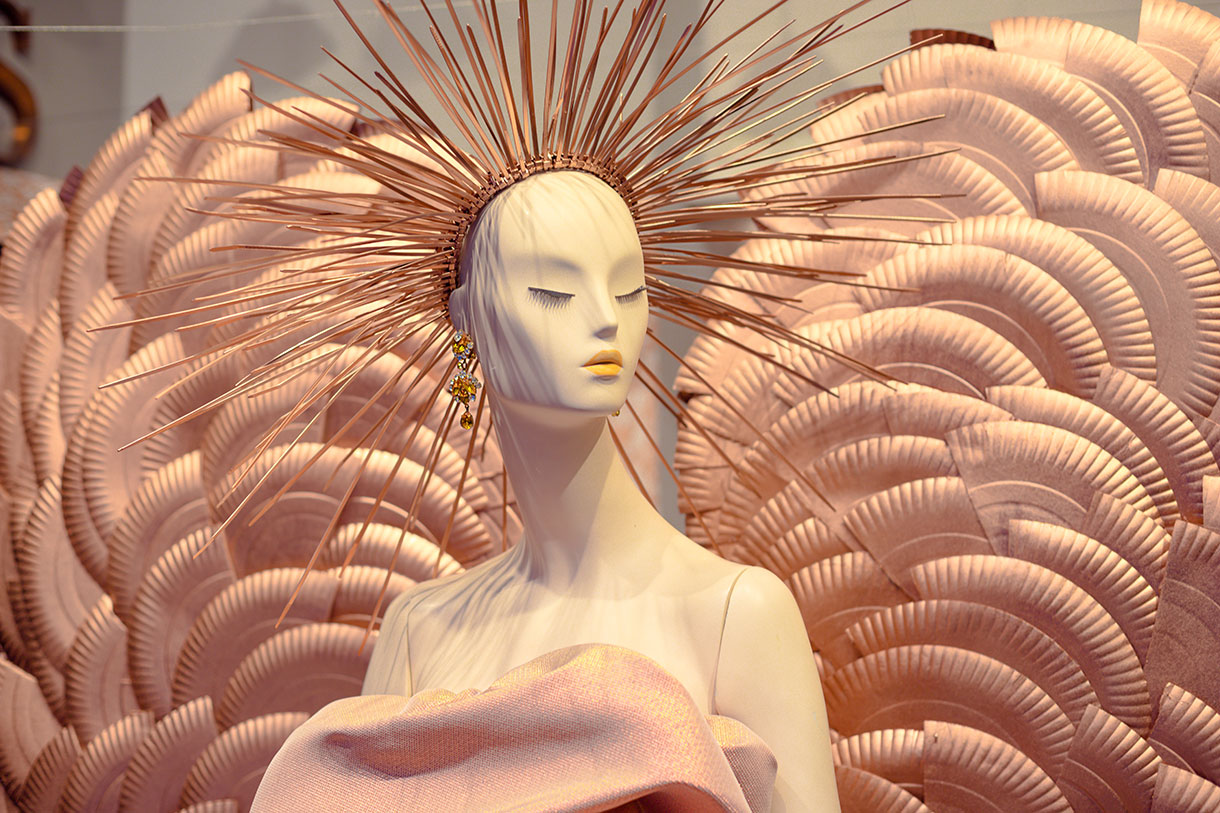
December 2019. The dazzling angel
The last showcase of the year was sublime, starring a look inspired by the strength and goodness of an angel to express the most glamorous and sophisticated femininity, coinciding as it did with the Christmas festivities. It was conceived by the students of IED Barcelona who created an impressive feminine look in pink tones that empowered and attracted all eyes. An unforgettable showcase!

Sometimes what experts in the field dictate does not have to be what ends up as a success on the street because, after all, taste and preferences are governed by perception and subjectivity. The same happens year after year, by way of example, with colour. A few weeks ago, Pantone ruled which colour would influence the world of fashion in 2020, as well as among other sectors such as design, decoration or advertising. The colour chosen is Pantone 19-4052 Classic Blue, a timeless blue shade that aims to provide calm, confidence and connection in a year that acts as a hinge between two decades. Classic Blue is the theory dictated by the colour authority after a year of research and analysis of trends. In practice, the reality is different because it does not always lead to success among the knowledgeable public that creates the trend and the moment, where the colour that is triumphing in fashion is lilac or lavender. And who endorses it? The answer is to be found on the catwalks of the Spring-Summer 2020 collections and it is put it into practice by celebrities, prescribers of style and experts in the field who have not hesitated to wear it on the street, thus creating an advance idea as to what will come next season.

On the catwalk
The latest creations from the big fashion companies flirt with lilac and lavender. Each one chooses the tone that suits them best, but always within the lighter, usually presented palette in monochrome looks in the company of complements in neutral shades. It is a delicate tone that brings uniqueness, femininity and a cold counterpoint to the ideal styles when temperatures are at their highest.
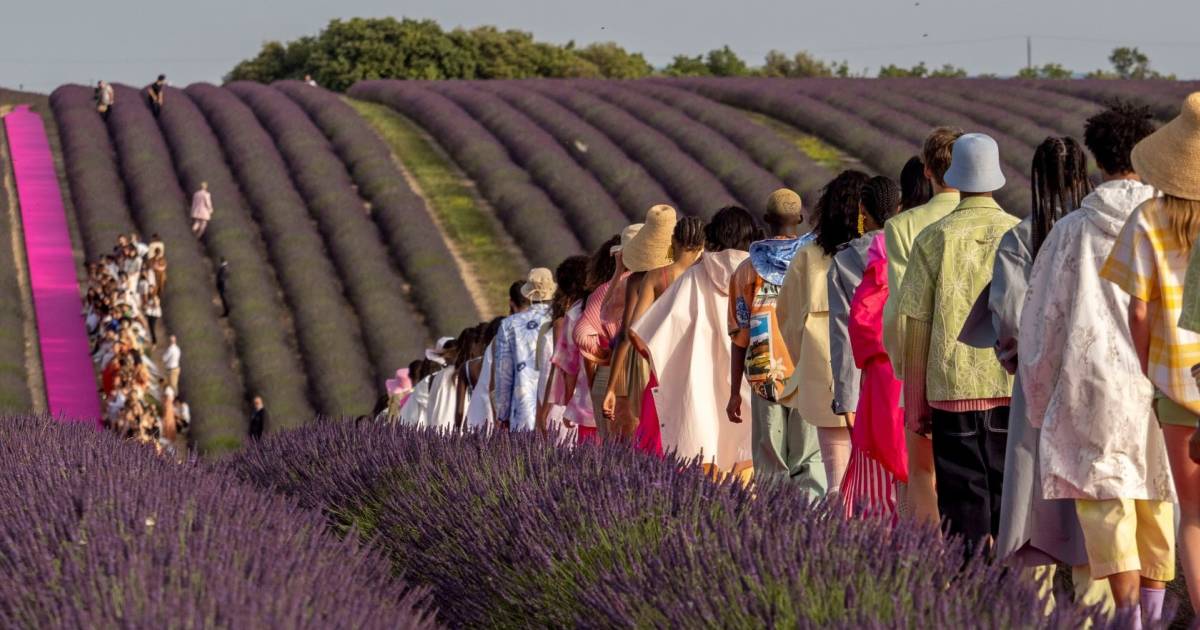
The vaporous chiffon and tulle dresses of Ulla Johnson or the extensive satin creations of Max Mara, the spectacular canvas-dresses with huge bows from Valentino, the most minimalist creations proposals with pronounced openings by Givenchy or even Alessandro Michele in Gucci have all made lilac into one of the most memorable looks of the new season. It is also worth remembering the impressive parade by Jacquemus amid the lavender fields of her native French Provence. The spectacular staging commemorates the tenth anniversary of one of the fashion-houses most in demand among millennials and the Z generation.
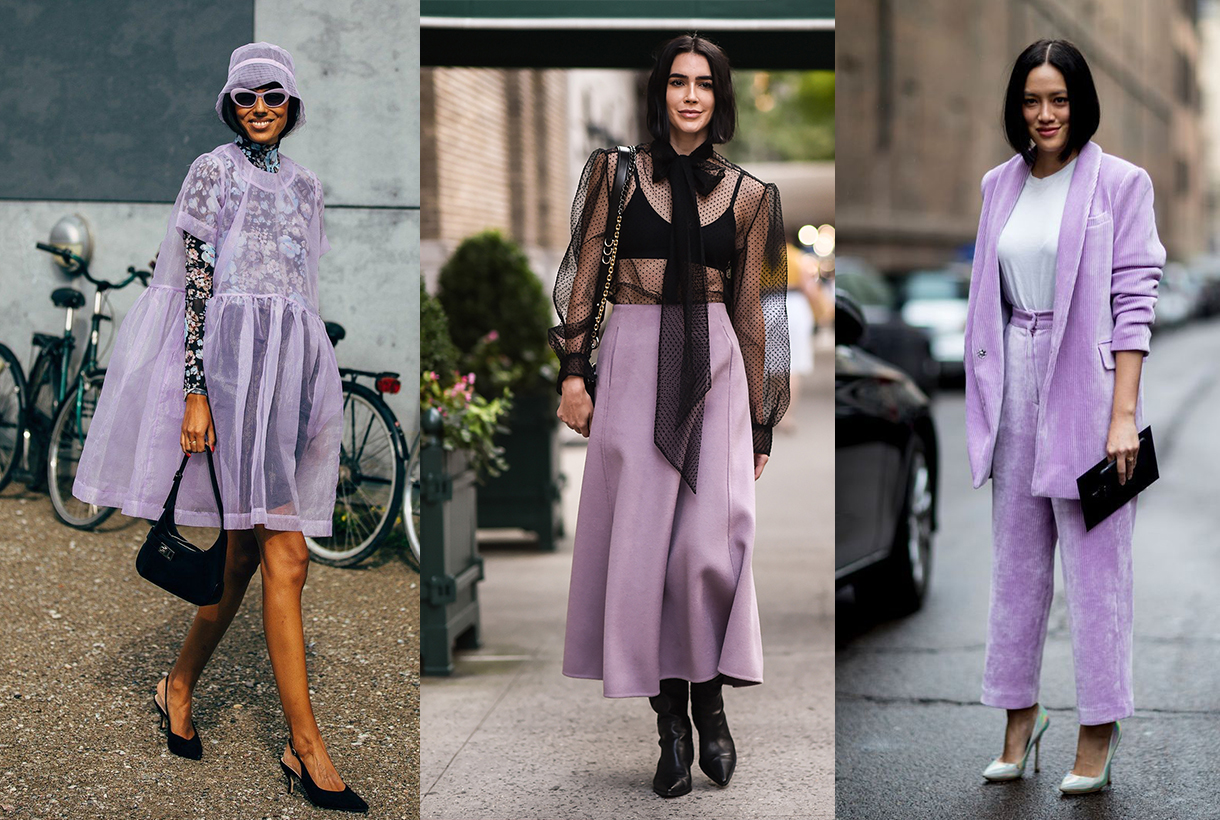
On the street
In parallel to the catwalks the most pastel purple began to (re) emerge strongly last year in the street style of the most influential fashion cities. Around the traditional parades in New York, London, Paris, Milan and Copenhagen (their street fashion show also deserves a mention), the style prescribers were the first to wear their outfits dyed in this singular colour that appeals to feminism.
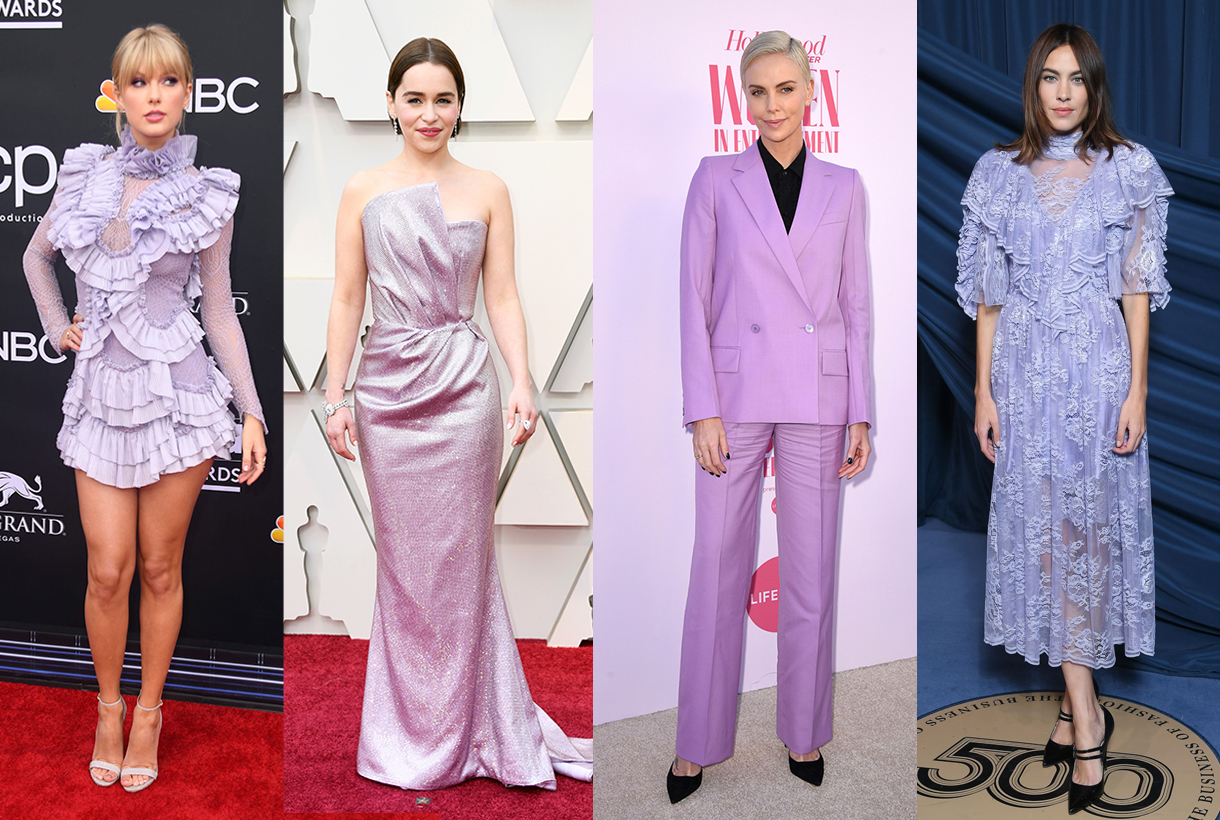
Throughout 2019 some lavender looks have also been seen on the world’s most prominent red carpets. We remember, for example, singer Taylor Swift and her short dress with romantic-inspired frills to attend the Billboard Music Awards or the dress worn by the youngest of the Kardashians girl at the MET Gala 2019. Actresses Emilia Clarke and Charlize Theron also opted for a Lavender shade: Clarke opted for a Balmain dress at the 2019 Oscars gala and Theron for a tailor-like suit. Even the British it-girl, Alexa Chung, opted for this colour in a vintage style dress with lace and transparencies at the BoF Gala during Paris Fashion Week.
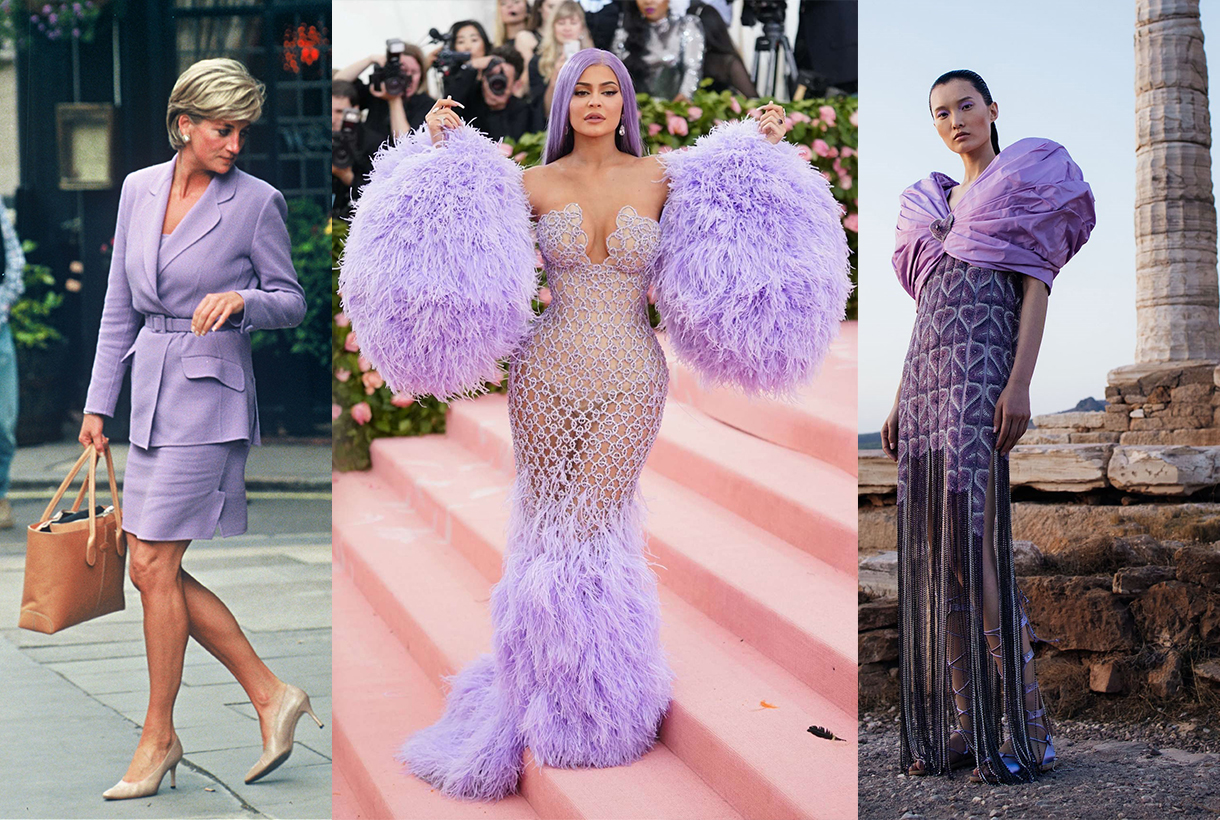
At Gratacós we also pay homage to the femininity of lilac and present some of the fabrics for next season. Some of them are have now in the sales. Ask us and we will advise you!




These are not good times for the survival of those areas that are the essence of authenticity and uniqueness and which add that singular character which is sorely lacking in most cities. The retail and multi-brand stores that bear the taste and style of their owner are gradually disappearing in those same homogenized cities with their identical shopping streets full of multi-brand chains and other shops with insipid character that appeal only to monotony and boredom. The culture of the clone seems still not to know its limits.
It is not a pessimistic vision, it is a reality that we also perceive in other fields, but maybe in the face of so much uniformity, whenever someone or something deviates from the norm, it attracts even more attention. And one of these magical areas is Dover Street Market.
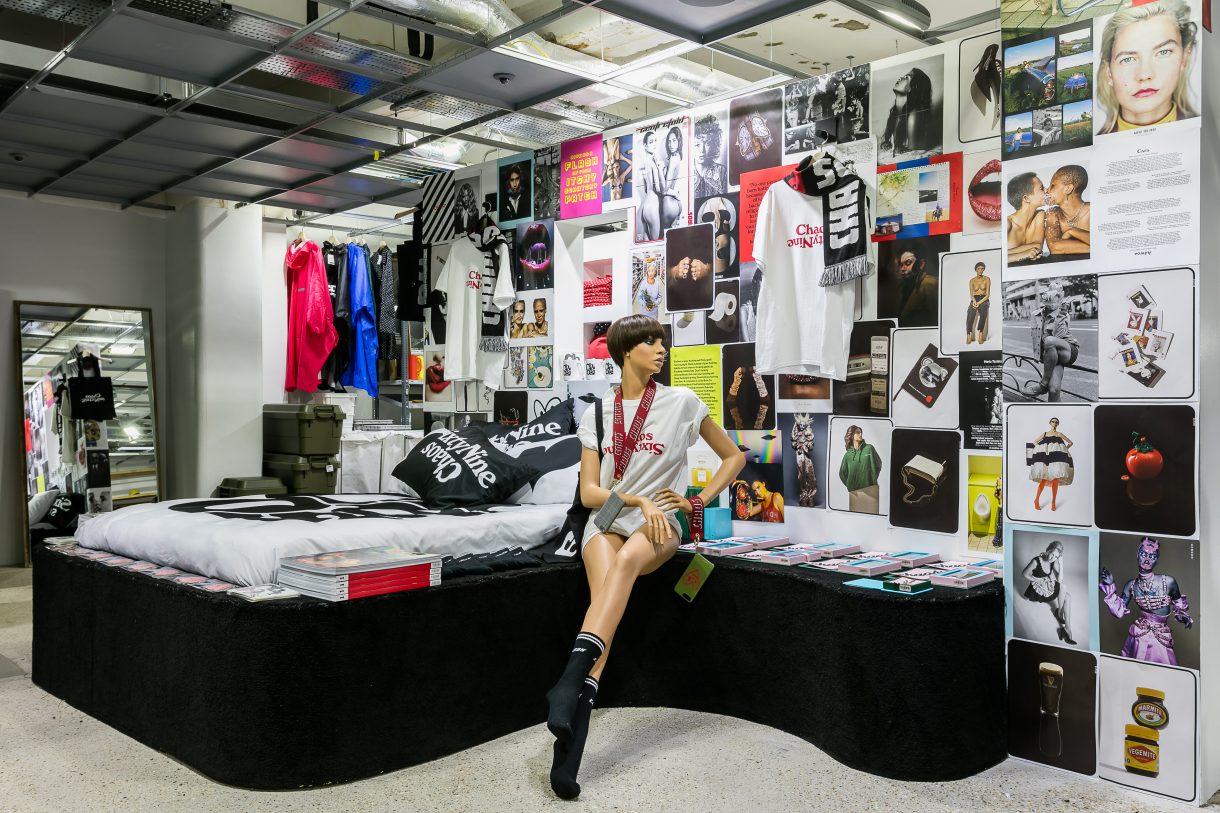 The retail sale revolution
The retail sale revolution
Dover Street Market has just turned 15 and its legacy is present in the main international fashion capitals. Its creators, the Japanese designer Rei Kawakubo , architect of Comme des Garçons, and her husband Adrian Joffe wanted to conceive their own experiment: an “anti-department” store, where everything flowed in the same concept, that would bring together in the same space both acclaimed or avant-garde designers and new talent. An inspirational fashion and beauty concept store dedicated to creating sensory experiences for customers with constant product renewal. The important thing is to generate surprise via novelty and the unexpected.
Dover Street Market first opened its doors in 2004 and in its day it revolutionized the retail landscape with its successful formula. The ideas of Kawakubo and Joffe were clear: they were not targeting a particular customer, nor did they want to separate the store into fixed departments. Quite the opposite: they wanted to create a unique concept where everything flowed, in accordance with the spirit of each brand, in order to capture the attention of the aesthete audience that loves both classic and avant-garde, young designers and luxury brands. A place capable of attracting and inspiring, “that stimulates the senses, elevates the spirit and makes one feel positive,” declared Joffe to Vogue.
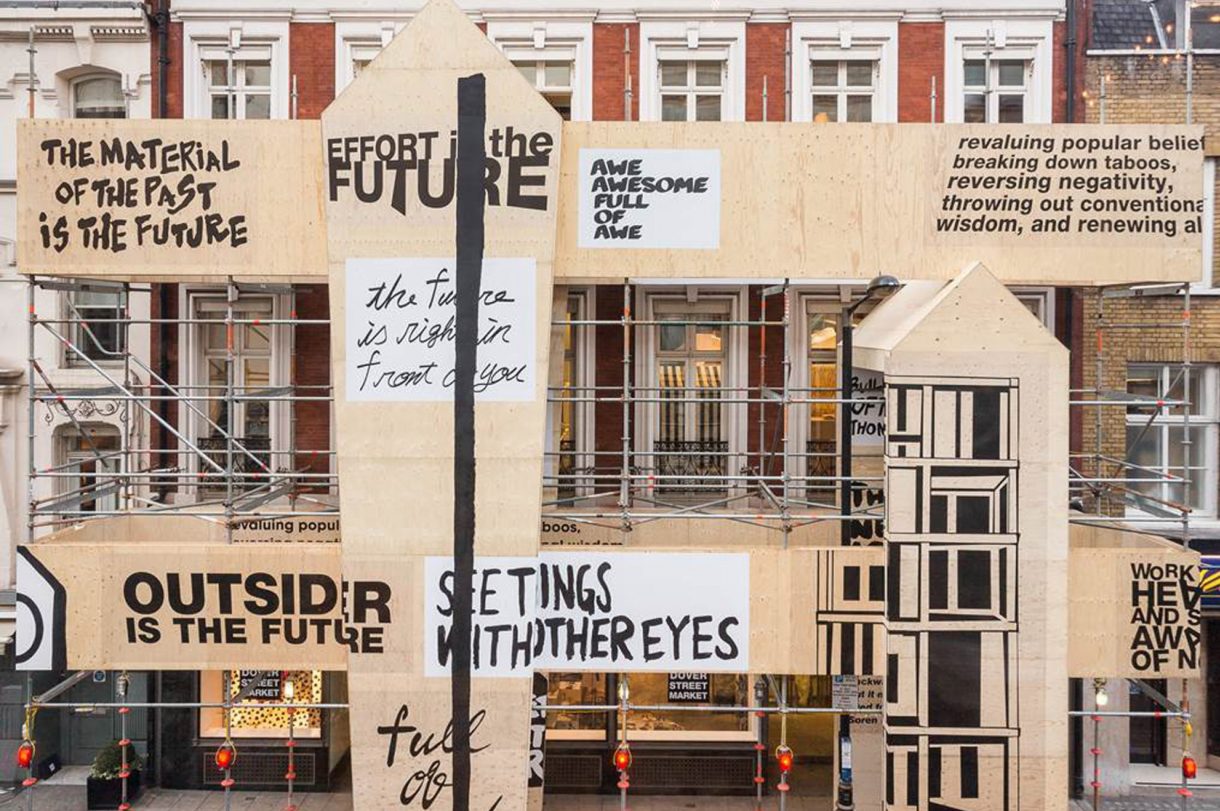
Rei Kawakubo called it the principle of “beautiful chaos” : the desire to break with the lifelong conventions of retail trade to favour the creation of a vast collaborative area in which the friends and family of Comme des Garçons could congregate, interact with each other and present their brands in new and dynamic ways.
This innovative trading concept, together with others that have marked a trend in the last decade, has spread throughout the world, from New York to Los Angeles, Beijing, Tokyo and Singapore. The most recent area opened in October in a shop dedicated to perfumes and cosmetics in Paris: the new invention is called Dover Street Perfume Market.
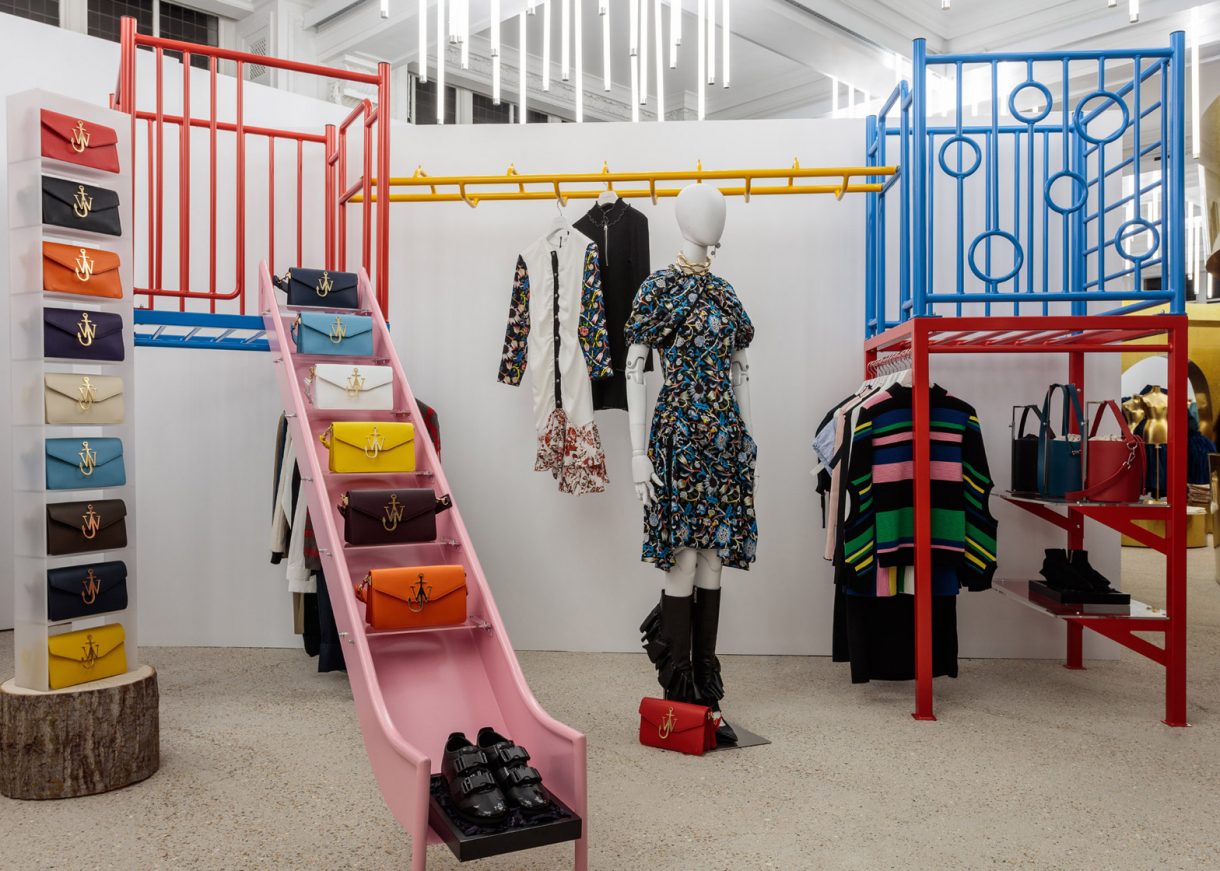
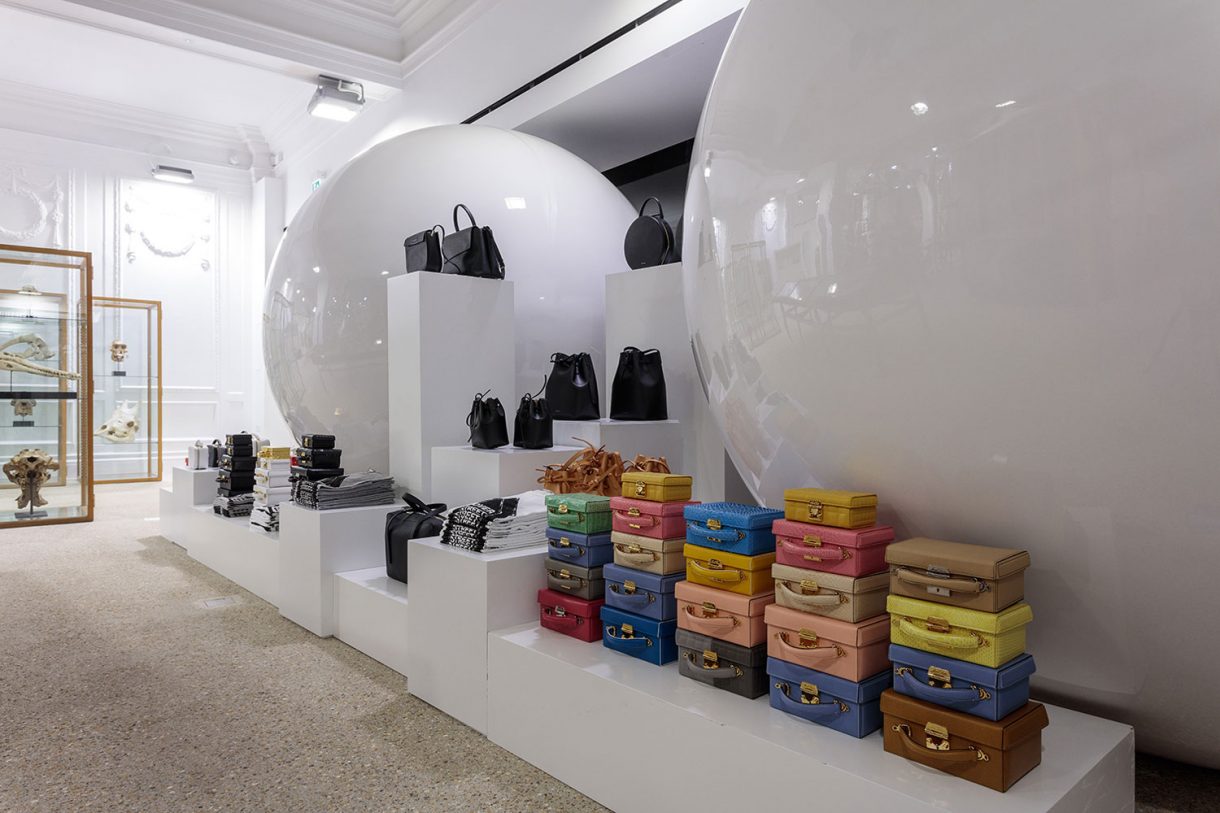

They call it the new black for its versatility and functionality, appealing elegance with discretion. Navy blue was never a risky tone, nor did it pretend to be because it is precisely through harmony, balance and timelessness that it seduces, which makes it a safe bet inside the wardrobe, one which goes beyond the cycles and fashions dictated by the sector. And it is already well-known that the classic never dies. For this reason the colour in question borders on immortality.
Here are some curiosities about enigmatic navy blue:
The origin of navy blue
Navy blue owes its name to the dark blue that was used in the uniforms of several navies. The first to adopt this shade was the British Royal Navy in 1748 and subsequently it was extended to most of the world's navies. In fact it offered the advantage that being almost black the loss of colour was avoided. Thus during the 18th century it was used as a base to dye uniforms.
During the 19th century the use of navy blue extended to other professions and quickly conquered the street. Then the colour black continued to maintain dominance in clothing which was considered serious. However, dyers used Prussian blue and indigo pigments to launch the fashion of navy blue fabrics and dresses, which became a social phenomenon. Navy blue maintained the sobriety of black, but it proved to be less hard and above all cheaper. In fact the colour of the clothing was generally not a matter of taste, but rather of money. After World War I this dark hue displaced black in many professions such as sailors, military, gendarmes, fire-brigade, police or civil servants.

Dior adopts it as a feminist symbol
“Among all colours navy blue is the only one that can compete with black, by presenting the same virtues.” This phrase by Christian Dior has also guided the last stage of the French maison led by Maria Grazia Chiuri, the first woman to lead the creative direction since 2017. Navy blue was Chiuri’s second collection for Dior, rebelliously picking up the heritage of the French designer with creations brimmed with items never seen on the catwalk such as jeans or a black leather beret as a star accessory.
Thus evening dresses, with transparencies and brightness, alternated with other looks for trouserss and workers’ overalls, as if they were factory uniforms combined with printed handbags. Navy blue represents equality and uniformity for Chiuri. There is no distinction of classes or genders. “The worker’s look is a way of saying that we have to work towards equal opportunities,” she argued at the time. Since then this colour has become a common resource in Dior collections that in lesser or greater proportion have adopted navy blue.

The most classic blue will also be the colour of 2020
2020 will also be dyed in blue. The justify Institute, a world reference in chromatic themes, has chosen the Classic Blue 19-4052 as the colour that will influence next year in such creative sectors as design, fashion or advertising. According to the institution it is a “lasting blue shade for our times, elegant in its simplicity”. It suggests the sky at sunset and its calming qualities, such as the promise of protection, ”said Laurie Pressman, vice president of the Pantone Colour Institute.
According to the institution Classic Blue tends to surge at convulsive moments of change and this tonality evokes the desire to consolidate reliable and stable foundations on which we can build. In this sense, it offers us a refuge: “We live in an era that demands trust and faith, and this type of blue offers a solid and reliable feeling that encourages us to broaden our thinking and challenges us to see things in depth,” explains Leatrice Eiseman, the executive director of Pantone.
The Pantone colour of the year is chosen by the directors of the company and about 40 experts from around the world, who take into account factors such as the economic situation, films and popular songs or social issues, among other variables. Thus Classic Blue is taking over from Living Coral, the colour of 2019.

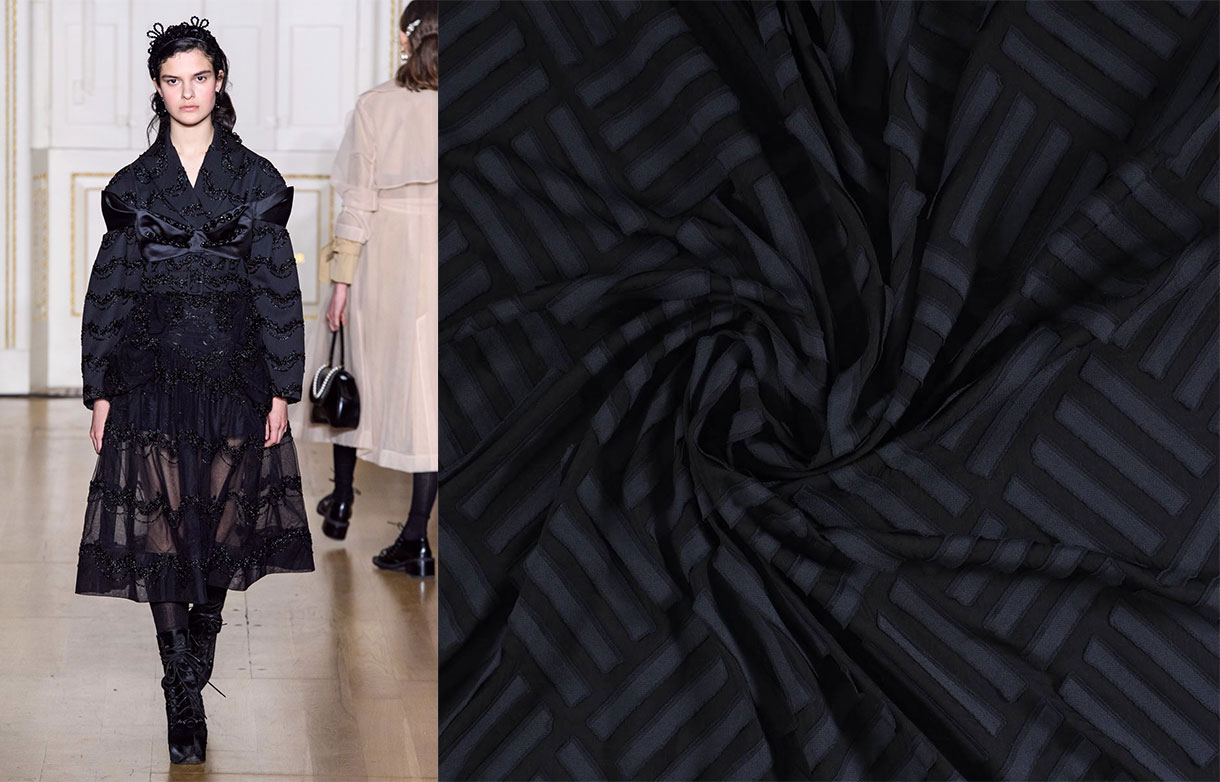

Miércoles 27 noviembre 2019
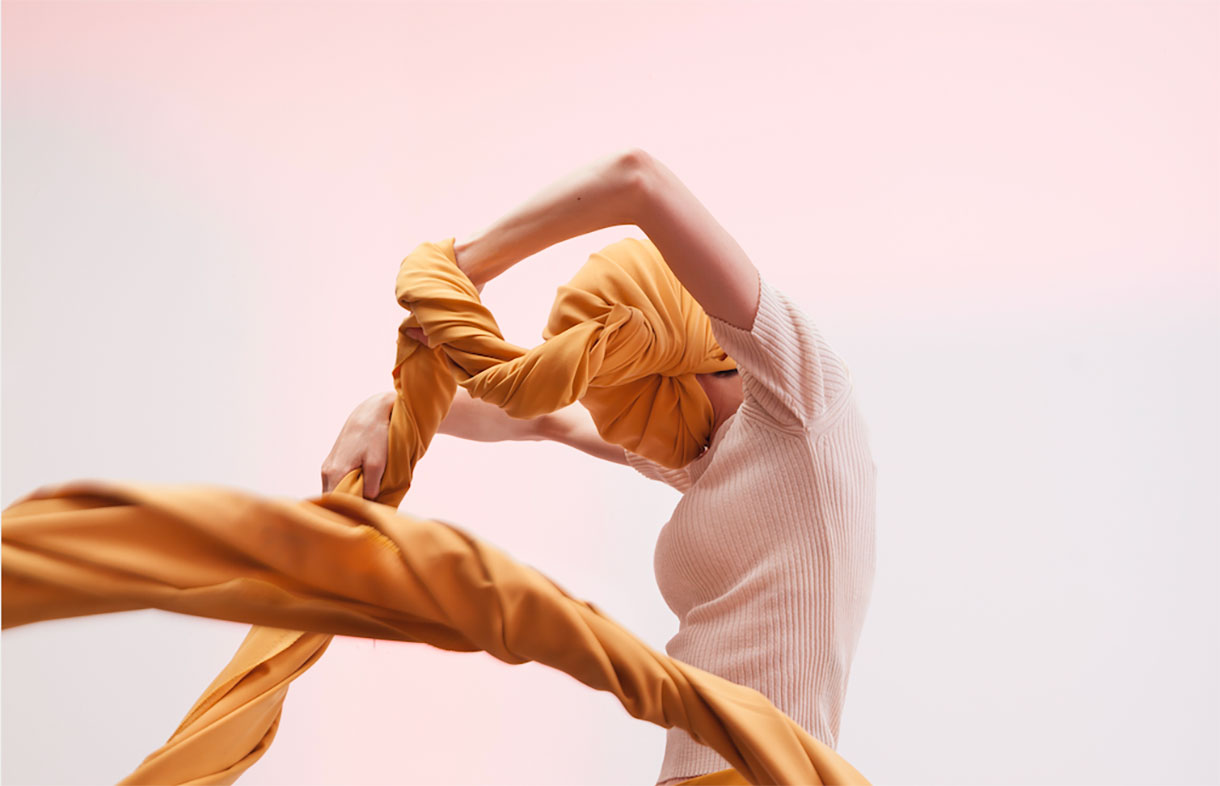
Barcelona is emerging, step by step, as a sustainable city in all its facets, including fashion. In this area the city will become this weekend (29th/30th November) the epicentre of the debate on sustainable and ethical fashion in southern Europe with the celebration of the first edition of the Re-Barcelona Sustainable Fashion Global Event: it is an international meeting point where sustainability in the fashion sector will be the protagonist and where the growing need to reimagine the fashion industry and rethink our consumption habits will be discussed. This unique event, co-organized by the Asociación Moda Sostenible Barcelona (MSBCN) and Seed & Click, and promoted by Barcelona City Council, has the vocation of becoming the voice and discussion forum of the best practices and initiatives in creation, production, sales and use of sustainable fashion among Mediterranean countries.
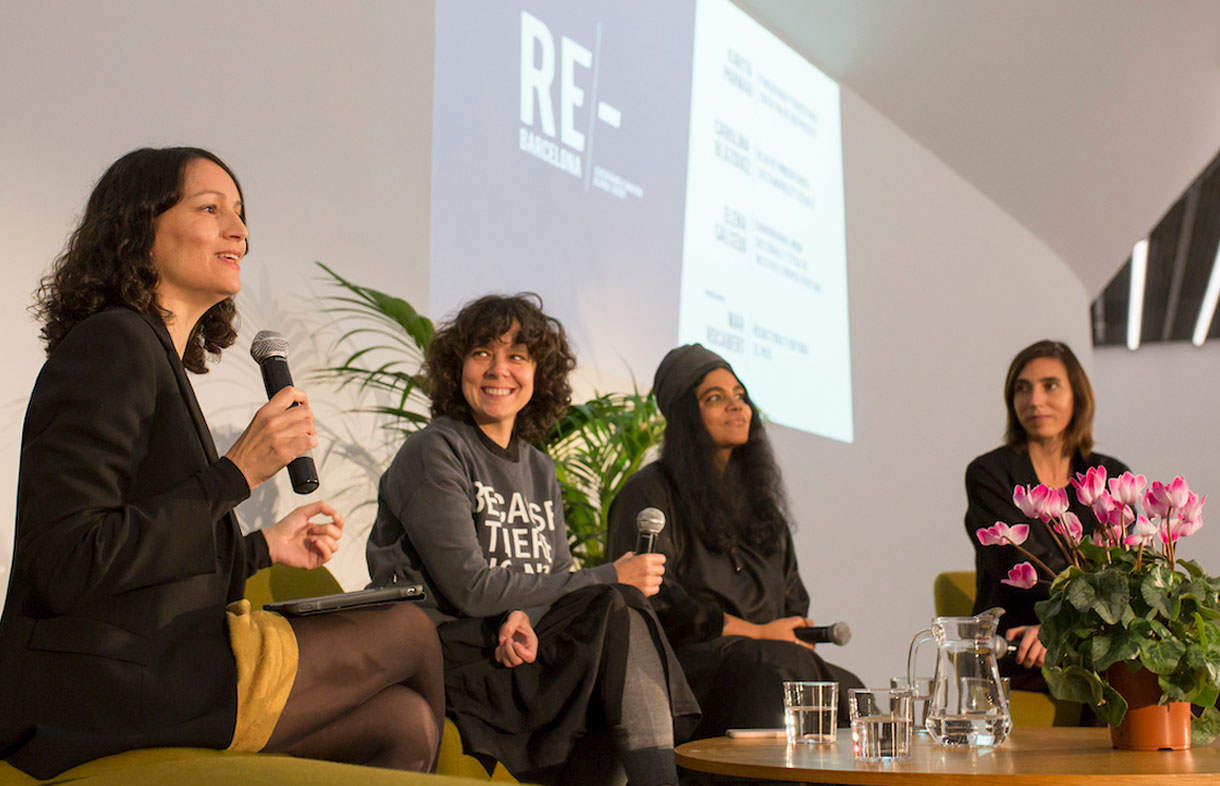
Presentations in sustainable key
Re-Barcelona will bring together more than 30 international professionals in sustainable fashion at the Disseny Hub Barcelona. The first day is aimed at professionals in the fashion industry and the second day will be open to the public, seeking to make consumers aware and point them towards more responsible consumption habits via fashion exhibitions, workshops, projections and masterclasses .
Thus on Friday 29th the Summit Sustainable Fashion and Beyond will take place, which for professionals will address the realities and challenges of the fashion sector in order to to bring about a more sustainable industry. During this day session prominent international names such as Rossana Orlandi , one of the most influential personalities in the world of design, will participate and among others Marie-Claire Daveu , director of sustainability at Kering, Sara K Arnold, founder of Higher Studio, Aldo Sollazzo, CEO of Noumena, Manel Subirats, general director of Greendyes Research Lab of Nextil, Mar Isla, Director of the Chair of Circular Economy, TecnoCampus, Kavita Parmar, founder of IOU Project and Marilyn Martinez, senior analyst at Make Fashion Circular at Ellen MacArthur Foundation.
In addition the meeting will feature four round table fora: the first, to discuss the capacity of fabric recycling and reflect on innovative and sustainable materials for the future; the second, to discuss new business models; the third, on the consumer mindset ; the last one, on sustainability in its entirety, incorporated into retail of the future. Prominent spokespeople from the sector will participate, such as, among others, Manuel Martos , Group Managing Director of Nextil, François-Ghislain Morillion , founder and CEO of Veja, Elena Foguet, Business Director Spain of Value Retail, Mariona Sanz , director of Girbau LAB in Girbau, Carolina Álvarez-Osorio , director of marketing and communication of Ecoalf, Carlos Lahoz , Global Brand Innovation Strategist for Textile Printing Business, of HP Inc ., Franco Ghiringhelli , general director, of Ezio Ghiringhelli Spa, Pau Solanilla , president, of Reputation Republik and Tamsin Lejeune , CEO of Common Objective. Iria Pérez, editor in chief of Modaes.es will be a moderator, as will David Allo, director of sustainability at Texfor. This summit for professionals is a paid event and tickets are on sale on the official website.
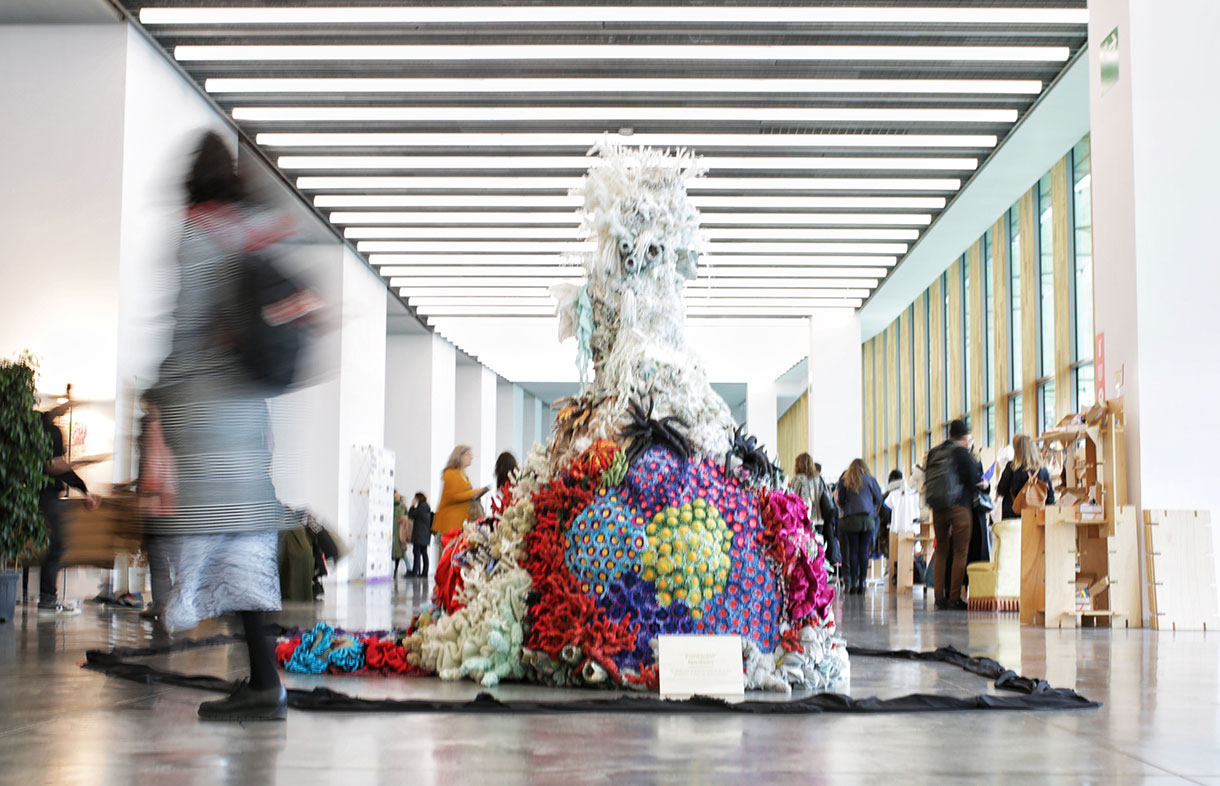
In addition the meeting will feature four round table fora: the first, to discuss the capacity of fabric recycling and reflect on innovative and sustainable materials for the future; the second, to discuss new business models; the third, on the consumer mindset ; the last one, on sustainability in its entirety, incorporated into retail of the future. Prominent spokespeople from the sector will participate, such as, among others, Manuel Martos , Group Managing Director of Nextil, François-Ghislain Morillion , founder and CEO of Veja, Elena Foguet, Business Director Spain of Value Retail, Mariona Sanz , director of Girbau LAB in Girbau, Carolina Álvarez-Osorio , director of marketing and communication of Ecoalf, Carlos Lahoz , Global Brand Innovation Strategist for Textile Printing Business, of HP Inc ., Franco Ghiringhelli , general director, of Ezio Ghiringhelli Spa, Pau Solanilla , president, of Reputation Republik and Tamsin Lejeune , CEO of Common Objective. Iria Pérez, editor in chief of Modaes.es will be a moderator, as will David Allo, director of sustainability at Texfor. This summit for professionals is a paid event and tickets are on sale on the official website.
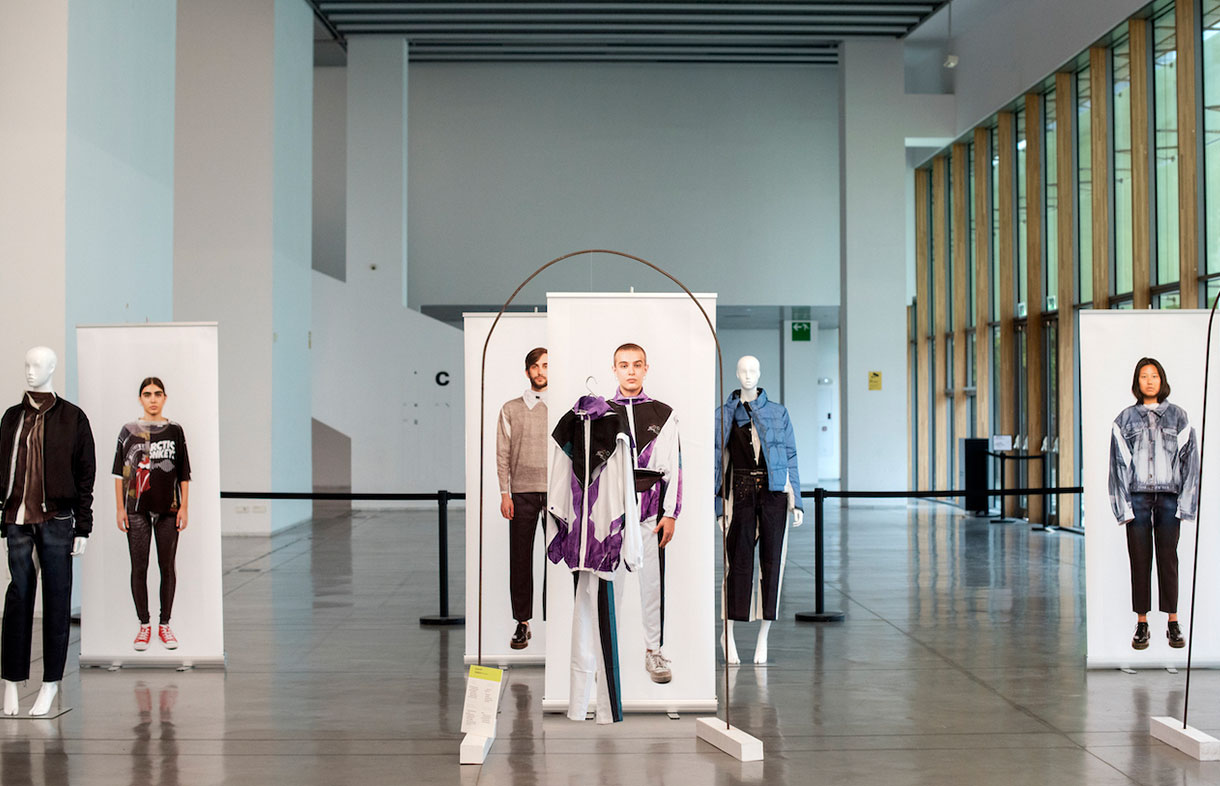
An area open to the public
Additionally Re-Barcelona will feature an area open to the public that during the two days of the event will be the scene of presentations, round tables, activities, workshops and screenings of fashion films . The Open Space, entitled ‘ Conscious Space Beyond’, will include an exhibition area with stands of entrepreneurs, companies and entities related to sustainable fashion.
Among the exhibitors are the entities resident in Disseny Hub Barcelona: BCD Barcelona Design Centre, which will promote “Hula Hoop: the experience in circular design” to raise environmental awareness via workshops; and MODA-FAD, which will celebrate the “MODA-FAD Sustainable Challenge”, a design marathon where 30 students will create new pieces from textile waste.
Attendees can also enjoy the show ‘Victor Papanek: the design policy of the Museu del Disseny’, the first major retrospective focused on one of the precursors of social activism and sustainability in design. ‘Reimagine Textile’ will also be exhibited, an entrepreneur programme in which TecnoCampus participates and will present start-ups with innovative projects also Reshape, which will show the winners of its annual competition on smart products and wearable technology, thanks to the support of the Italian Consulate General in Barcelona.
Finally, in the Open Space, Girbau will offer a masterclass on “wet cleaning” or water washing system, the green alternative to perchlorethylene for dry cleaners. In this same area there will be presentations of several projects, and as part of the Re-Talks, round table discussions will be held. Finally, fashion films will also be screened , in collaboration with the British Council and the Italian Consulate General in Barcelona.

Miércoles 20 noviembre 2019
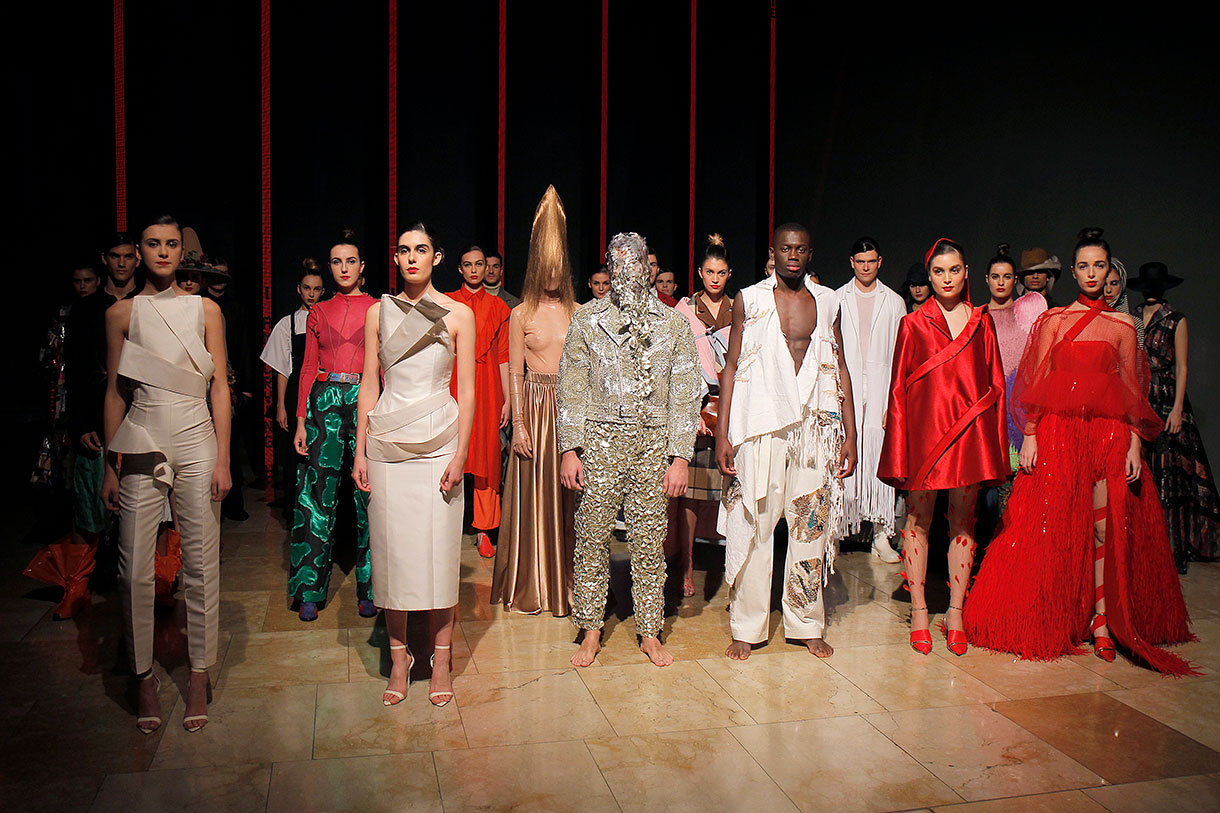
A tribute to design, creativity and emerging talent. That is exactly what was celebrated this week at the Guggenheim Museum Bilbao with the 25th anniversary of IED (Higher School of Design) in Spain. Among other activities the renowned fashion and design school wanted to record the event with an impressive fashion show in which national and international designers who have trained in the classrooms of IED Madrid and IED Barcelona participated, since the institution was founded in Madrid in 1994. Gratacós also participated in this exhibition of young designers collaborating through fabrics that took the form of lush garments on the catwalk. It is indeed part of our commitment as a company to support schools that help instruct future designers.

A parade of promising young designers of Spanish fashion
Under the name “25 designing the future”, the IED school grouped in the same parade 25 different collections signed by ex-alumni of IED Madrid and IED Barcelona who were responsible for capturing the past, present and future of the school. This event was part of the TopArte programme of the Guggenheim Museum Bilbao, on the occasion of the celebration of Bilbao Bizkaia Design Week. Recognized names that regularly participate on the main Spanish cat-walks such as Moisés Nieto, Carlota Barrera or Cristina Tamborero paraded together with other emerging brands in an eclectic exhibition of garments and visions that highlight the individuality of designers from different parts of Spain and also from countries such as Italy, Brazil, Romania, Israel, Mexico or the United Kingdom, among others. “Fashion is the most powerful means of expressing the identity of human beings. It is the connector and collector of dreams, urges, worries and personal inspirations …, therefore, we want to show a mosaic representative of IED talent of the last 25 years” declared Alessandro Manetti, CEO of the IED in Spain in justification of this powerful parade.
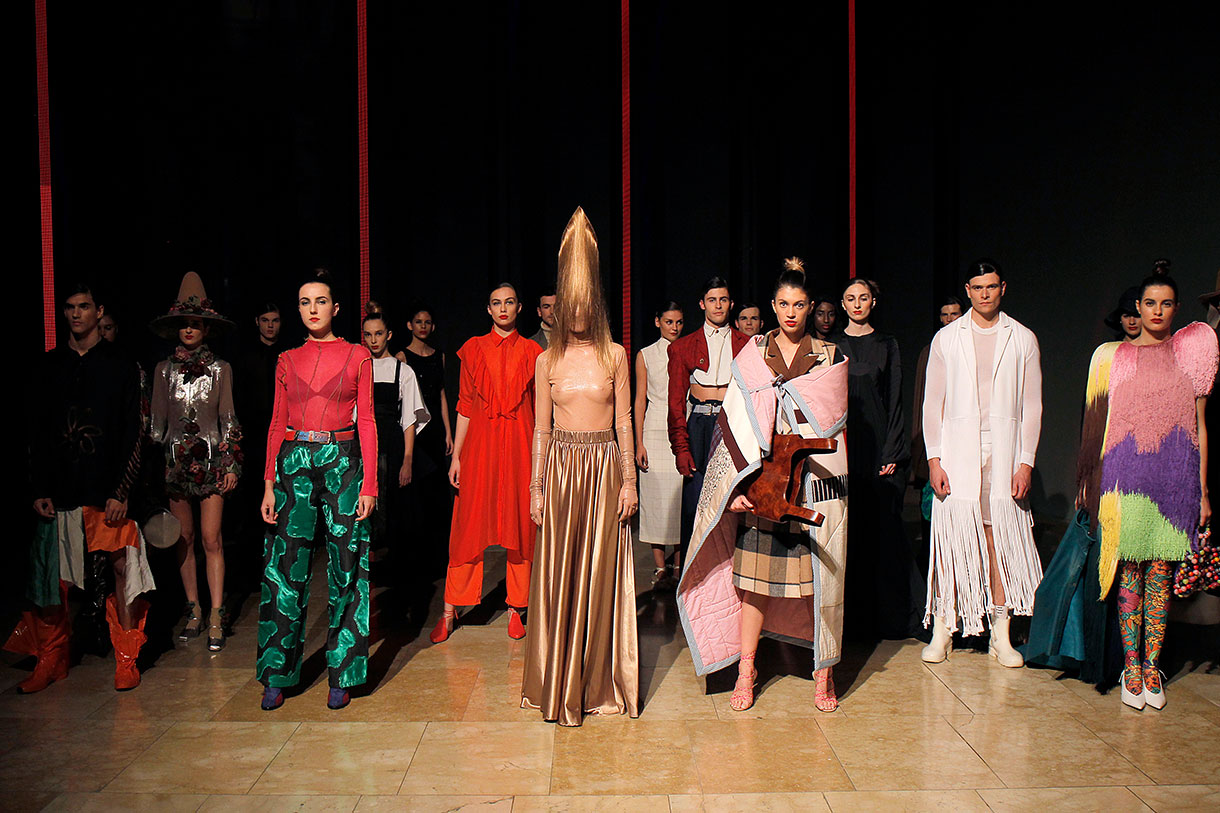
“The IED has left as inheritance an important generation of designers that promote the culture
and sensitivity of design worldwide” – Alessandro Manetti
The chosen looks of each participating designer were intended to define the future of fashion and reflect the challenges that the sector currently presents with creations designed for a sustainable look, conceptual and avant-garde designs, delicate handmade items produced locally or party dresses for large celebrations which follow haute couture techniques. “The IED has left as inheritance an important generation of designers that promote the culture and the sensitivity of the design worldwide”, added Manetti. In addition, for the occasion a former student of IED Madrid, one from IED Barcelona and another from IED Milan each created two looks for the event in honour of the 60th anniversary of the construction of the Guggenheim Museum in New York, designed by the architect Frank Lloyd Wright . The curved spiral shapes, the delicacy of the pieces of art exhibited in it and the opulence of the building’s architecture have inspired the designs, some of which have been manufactured with our fabrics that we offered for this celebratory event.

An event full of familiar faces
This parade commemorating the 25 years of IED also counted on the support and assistance of important celebrities linked to the fashion world such as actress Rosy de Palma, the American international critic Diane Pernet, the Belgian fashion expert Francine Pairon or the designer Custo Dalmau, who accompanied Pilar Pasamontes, IED scientific director of Fashion and Julia Weems and Mosiés Nieto, directors of the fashion area of IED Barcelona and Madrid respectively. Among the casting of models was Palito Dominguín, sister of Bimba Bosé and daughter of Lucía Dominguín, and the model Bet Callieri, all of whom participated in the closing parade.
It was a pleasure to collaborate in this unique event of celebration of the IED and at Gratacós we are eager to see everything planned for the future. Here’s to 25 more years!
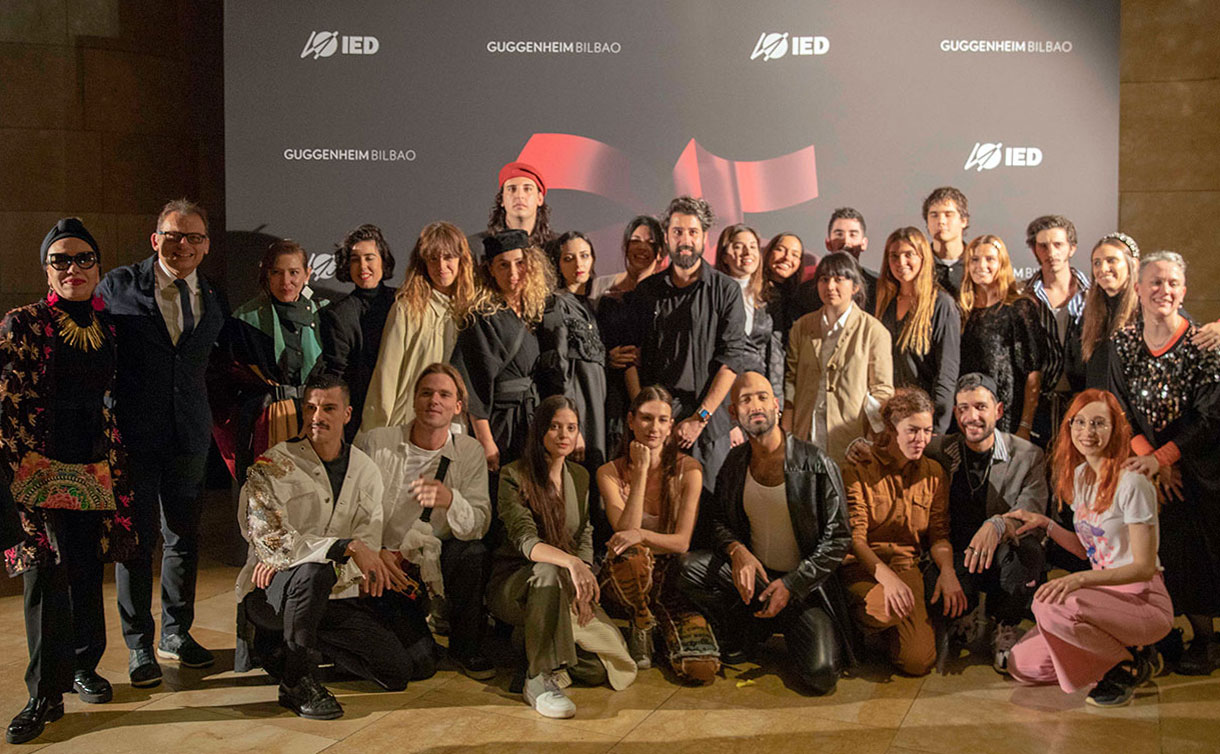

Something is cooking in Georgia that is catching the spotlight of the fashion industry. In the last decade this Caucasian country has been in full creative ferment, influencing various disciplines such as art, design and of course also fashion. Its capital, Tbilisi, is an authentic breeding ground for emerging designers who through their creativity are setting a hallmark for the industry, eager for novelties and ready to always hunt new talents. Among the most relevant creative designers at international level, for example, is Demna Gvasalia, who has revolutionized the landscape with her ironic and impractical designs for Vetements and her success has led her to become the creative director of Balenciaga. Another outstanding influencer is David Koma,who heads the company Thierry Mugler and his own eponymous brand based in London. Gvasalia and Koma represent the two most visible leaders of a new group of designers who are making waves in the Caucasian region.

Obviously Tbilisi still cannot compete with Paris, London, Milan or New York, but little by little, the Tbilisi Mercedes-Benz Fashion Week is gaining prestige and relevance within the international scene. Among all the independent designers who have presented the latest collections on the cat-walk we are following closely the designs of Anouki Areshidze with her own brand Anouki , the creations of Gvantsa Janashia, who usually relies on our fabrics to elaborate the looks of the latest collections, the Dalood firm led by its founder Maka Kvitsiani, the Gegesha brand , the luxurious creations of Ani Datukishvili and the minimal style of Keti Chkhikvadze. These designers with almost unpronounceable names habitually rely on our fabrics to develop their wild creations.

This cat-walk also generates fascination among the fashionistas who attend the parades dressed in a fresh and modern street style style and who fill dozens of photo galleries. Fashion magazines are in fact increasingly becoming aware of this effervescence that is appreciated and spread among the people at street level who dictate trends. That is why it is increasingly common to see international media photographers capturing every detail of the outfits of Georgian it-girls and it-boys.

Dominnico shines at the Mercedes-Benz Fashion Week Tbilisi
One person we cannot ignore is Dominnico and his staging on the Georgian catwalk in early November, which has been the first international experience of the Alicante designer in the world of fashion. It should be remembered that Domingo Rodríguez won the Mercedes-Benz Fashion Talent award during last July’s edition of the Madrid catwalk. This award brings together young talents and promises them a tempting reward: the cat-walk at the Tblisi Mercedes-Benz Fashion Week.

Thus Dominnico has had another opportunity to present his winning collection ‘Harajuku Kids’, exhibited during the month of September in our creative area in Barcelona. The SS20 collection is inspired by the movement that is trending on the Internet and the colours chosen by artists such as Andy Dixon or Antoni Tudisco with mannequins that resemble Bratz dolls. Their characteristic designs go for tornasolado plastic, brilli-brilli fabrics, magnificent creations in fur and billowing dresses which also captivated the Georgian public.
We will be following closely the work of Domingo Rodríguez and from Gratacós we thank you for your support and trust. Thanks Dominnico!

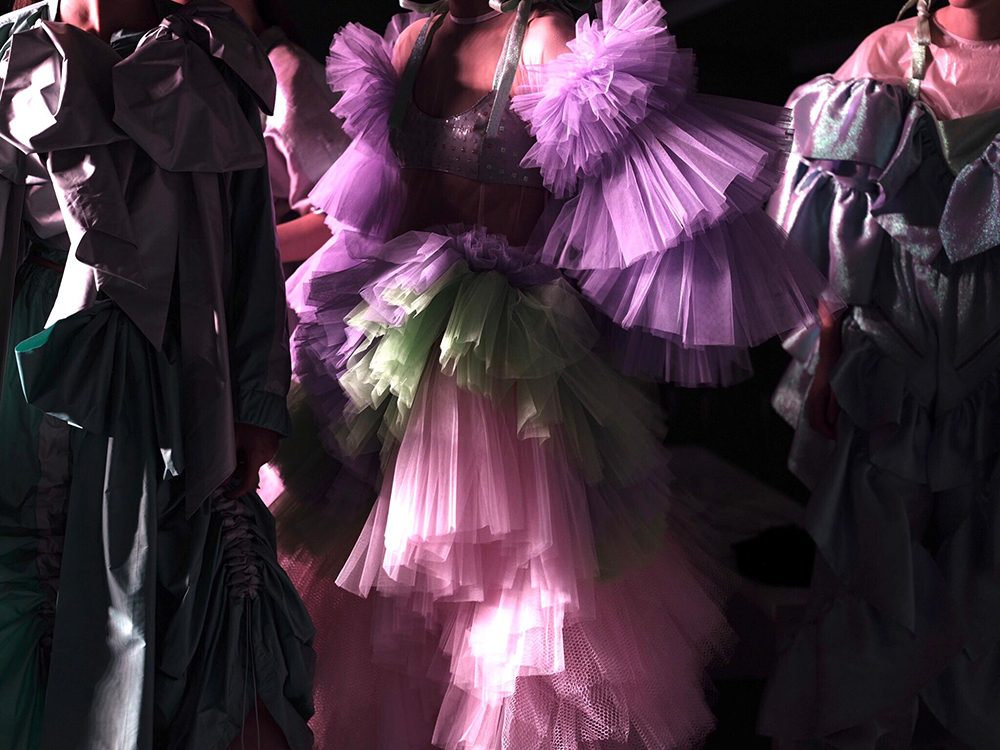
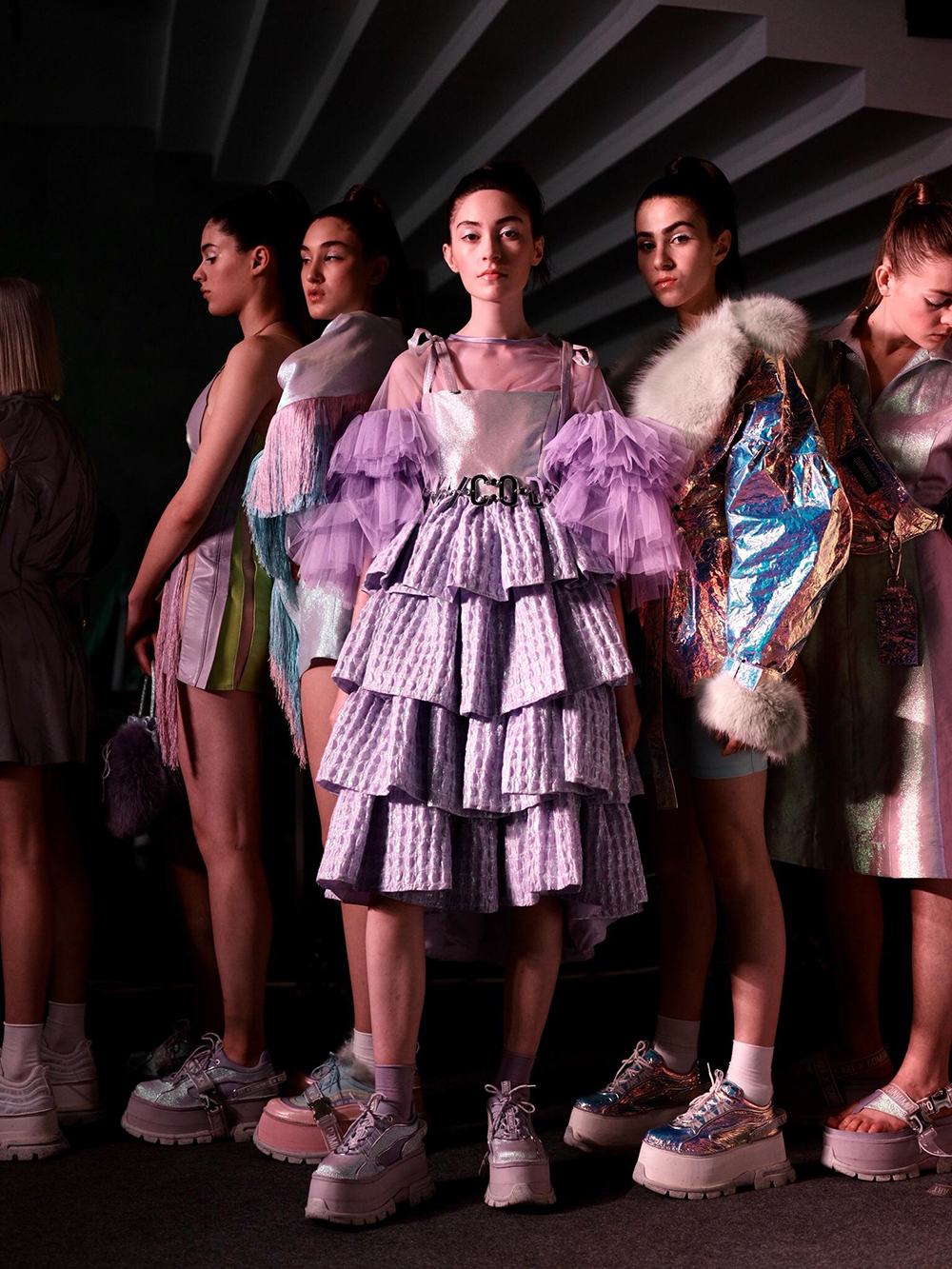
Miércoles 06 noviembre 2019

London, Berlin, Budapest, Barcelona … in the main European cities there are commercial initiatives that revolutionize – and revalue in turn – industrial areas in a situation of abandonment and that, together with other economic and social aid, become residential areas full of life that have a wide cultural and leisure offer, always maintaining the manufacturing aesthetic that characterizes them, marginal areas that become the cool neighbourhoods of the moment.
In Igualada and on a more modest scale, the Rec.0 initiative celebrates 10 years of action based on creativity, the industrial district of Rec, an authentic quarter which more than a hundred old tanneries inhabit – the majority in disuse – that testify to the textile legacy and the importance within the leather industry which this small quarter of Barcelona has had from the 18th century until today. This year specifically the organization of Rec.0 has opted for revealing the intricacies of the neighbourhood’s industrial heritage via various activities such as the uncovering of new tanneries converted into cultural equipment, workshops about the artisanal creative processing of leather and guided visits to various areas of the neighbourhood that are still in operation, among others. This set of activities not only seeks to reveal what was in this unique neighbourhood, but also bear witness to the ways in which the Rec has been transformed in the last ten years.
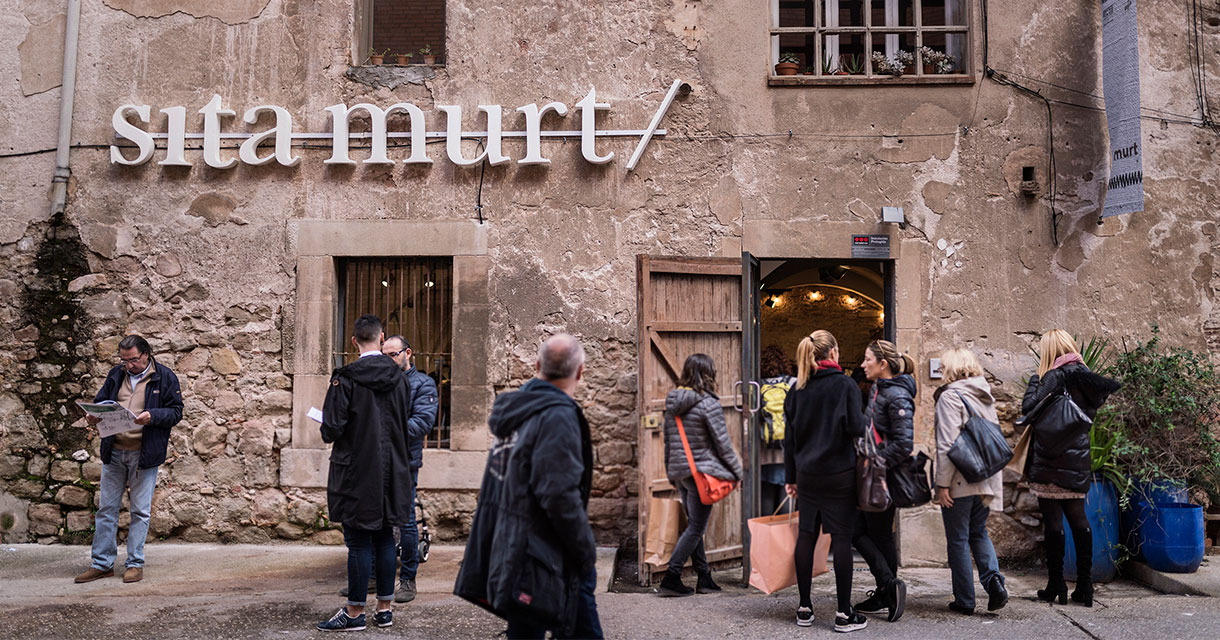
Apart from the wish to preserve and publicise heritage, Rec.0 remains the same as always: a biannual commercial festival in a one-off format that for four days revolutionizes this area of the city via pop up stores of international fashion brands and local firms, coexisting in specifically different industrial areas that are recovered and adorned for the occasion so that the participating brands can sell at special rates. With that same formula, repeated edition after edition, in the last decade it has established itself as an indispensable – and alternative –place to visit within the commercial and cultural ambit of Catalonia.

Author design guides Rec Experimental Stores
In this edition the urban tour of the Rec neighbourhood includes 60 temporary areas that will surprise the consumer and that house more than 80 brands of different formats and products for sale specifically of stocks in stores that only exist during the fashion festival. There are new products by Brownie, Vans, Pretty Ballerinas, Mascaró, or Eastpack, among others, that coexist with flagships such as Levi's, Adidas, Munich, Mango, Sita Murt, Indi & Cold, Nice Things, Ash …
What we find most interesting is that these large national and international firms are side by side with independent designer brands such as Miriam Ponsa, Txell Miras and Josep Abril which always share the same pop up store and have become the trident of Rec 0 design, to the extent that the festival is the reason why the three of them decided to join forces to boost their joint stores in Barcelona.

This year, Gorni Kramer or Who are also to be found in the designer area. Precisely in order to give more space to small-scale firms, the Rec organization has opened a new courtyard where a new brand will be installed every day. This allows it to make its way into the world of fashion and offers commercial possibilities to emerging designers. They will exchange synergies with other Catalan fashion brands such as Brava Fabrics, Woodys Barcelona or Cuirum that will coexist with the Nordic fashion of Sessún or Samsoe Samsoe. Finally, in this area dedicated to the most local design there is also the pop up store 080 with the winner of the Rec.0 competition next to the Catalan catwalk. This year the winner was IAIOS, a brand of sweaters made with recycled thread.

Leisure and family culture
To liven up shopping and visits to the industrial environment of the industrial district, Rec.0 has organized a cultural and gastronomic agenda in parallel with free activities for all audiences and tastes. In music, concerts by local groups and singer-songwriters such as Joan Colomo, Red Pèrill and Beth are the stand-out items among other performances. Discussions and reflections on issues related to the festival are also promoted. This year in the Rec meeting area Genís Roca will give a talk about digital transformation. For movie lovers Zoom, the International Audiovisual Content Festival of Catalonia, will feature the screening of short films and innovations on the small and the big screen. Finally cuisine is also a highlight, with areas set out for local producers and KM0 cuisine where chefs will offer local food in the various pop-up bars that have been expressly built for the festival.
The new edition of Rec.0 begins today and will take place until November 9 in the Rec quarter of Igualada.

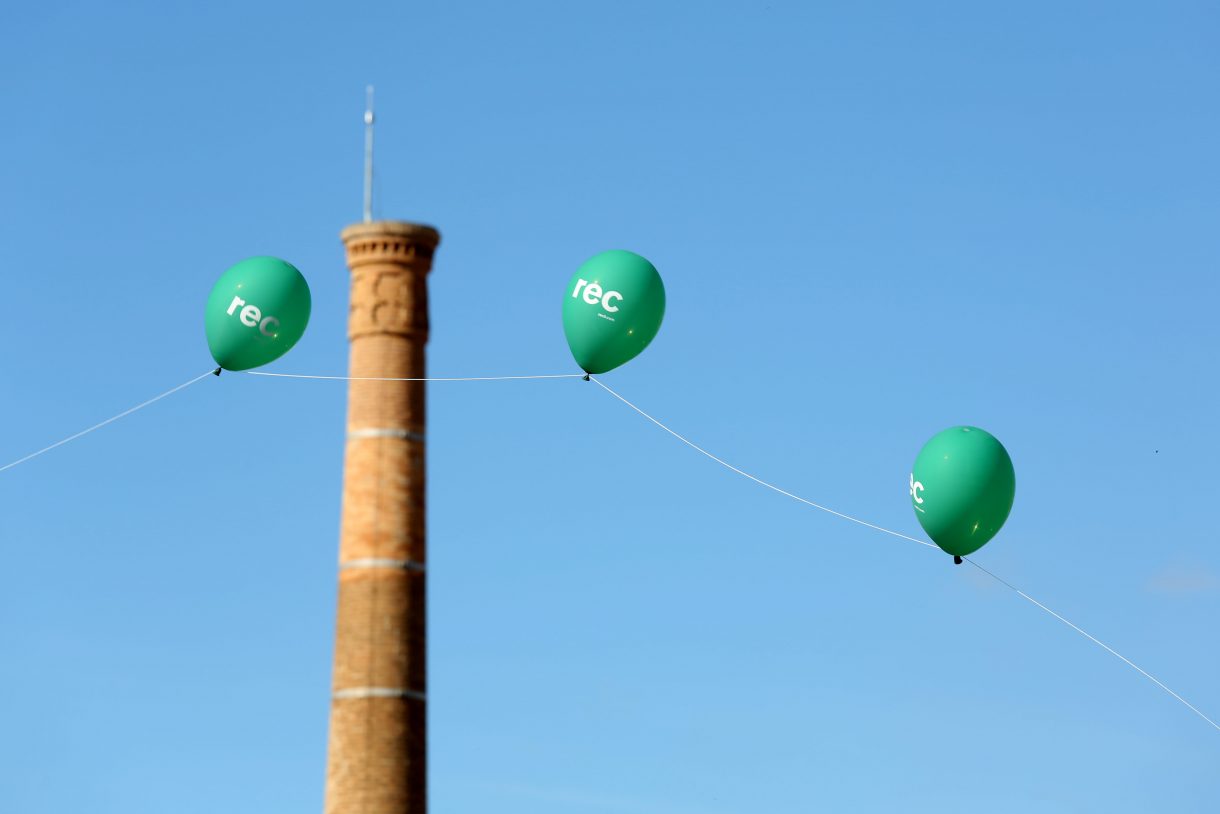
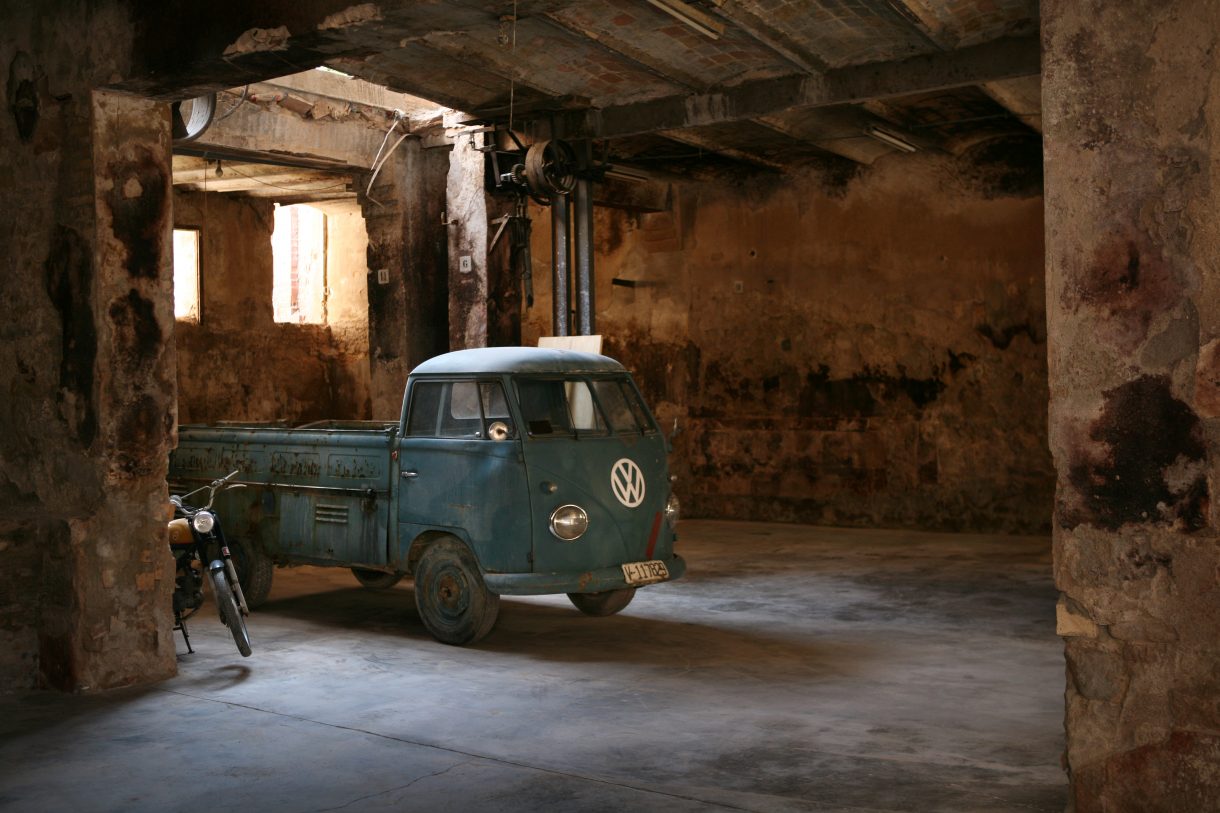
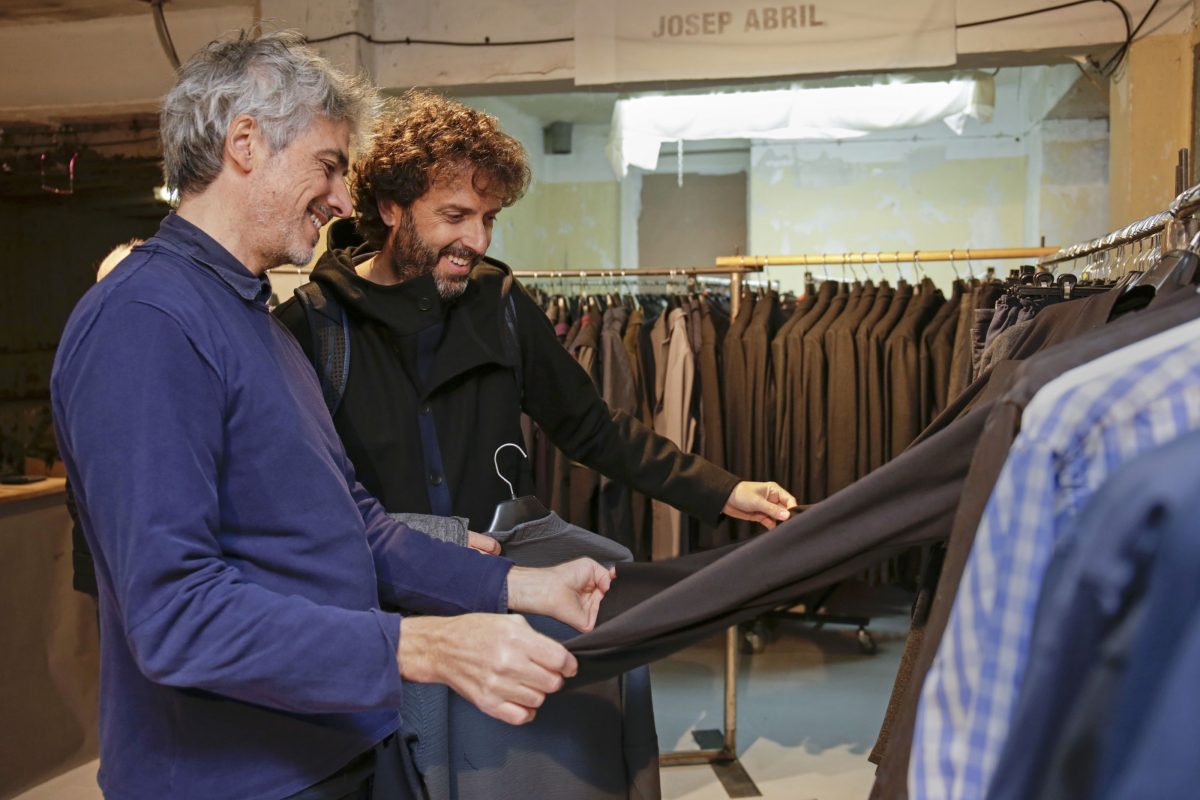
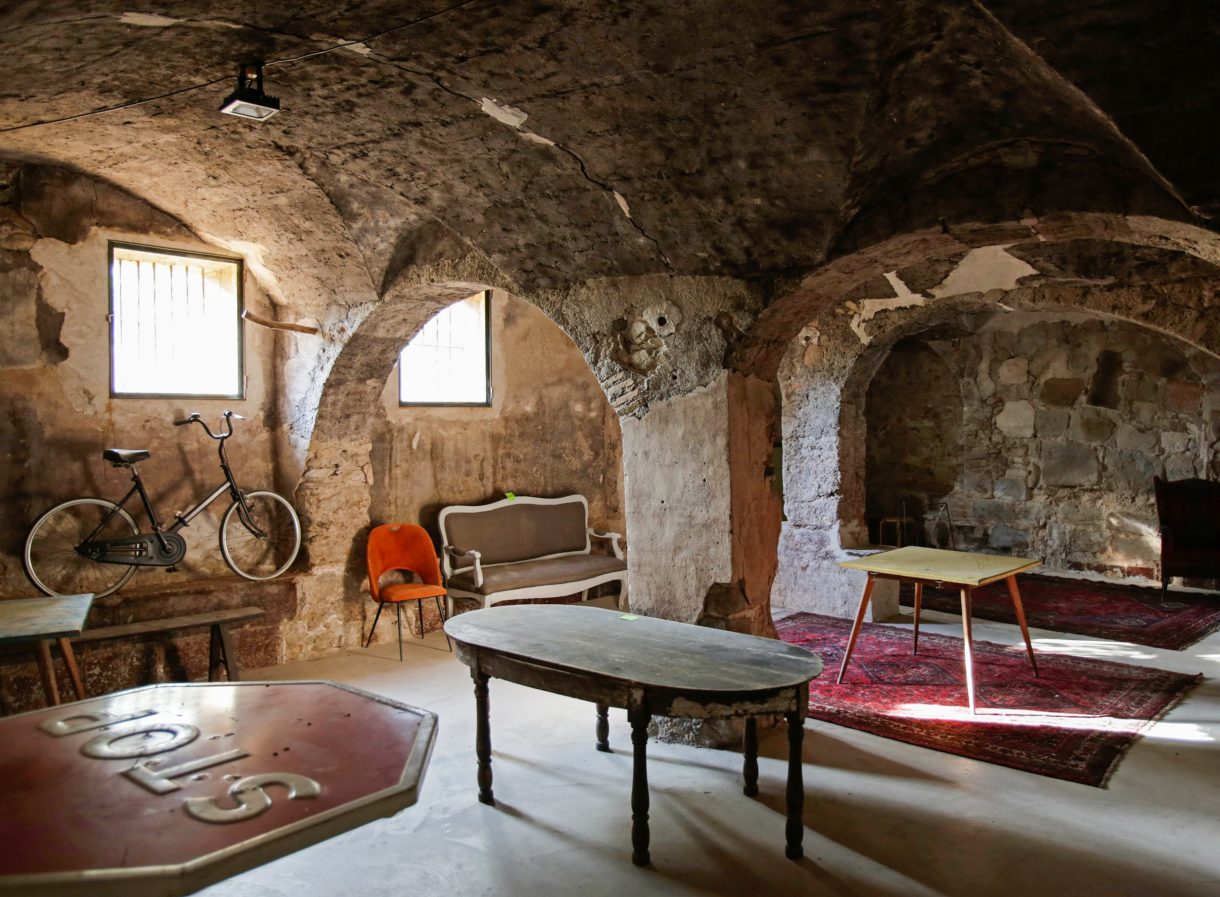
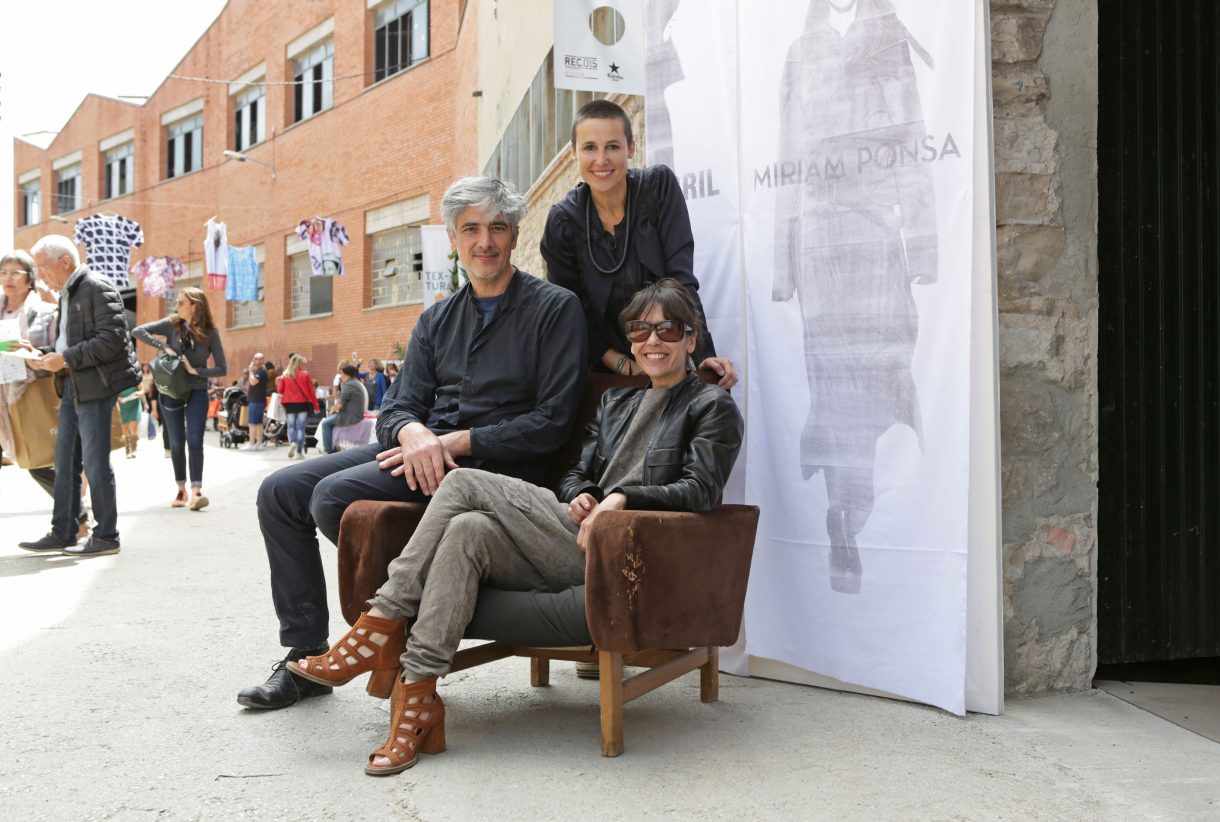
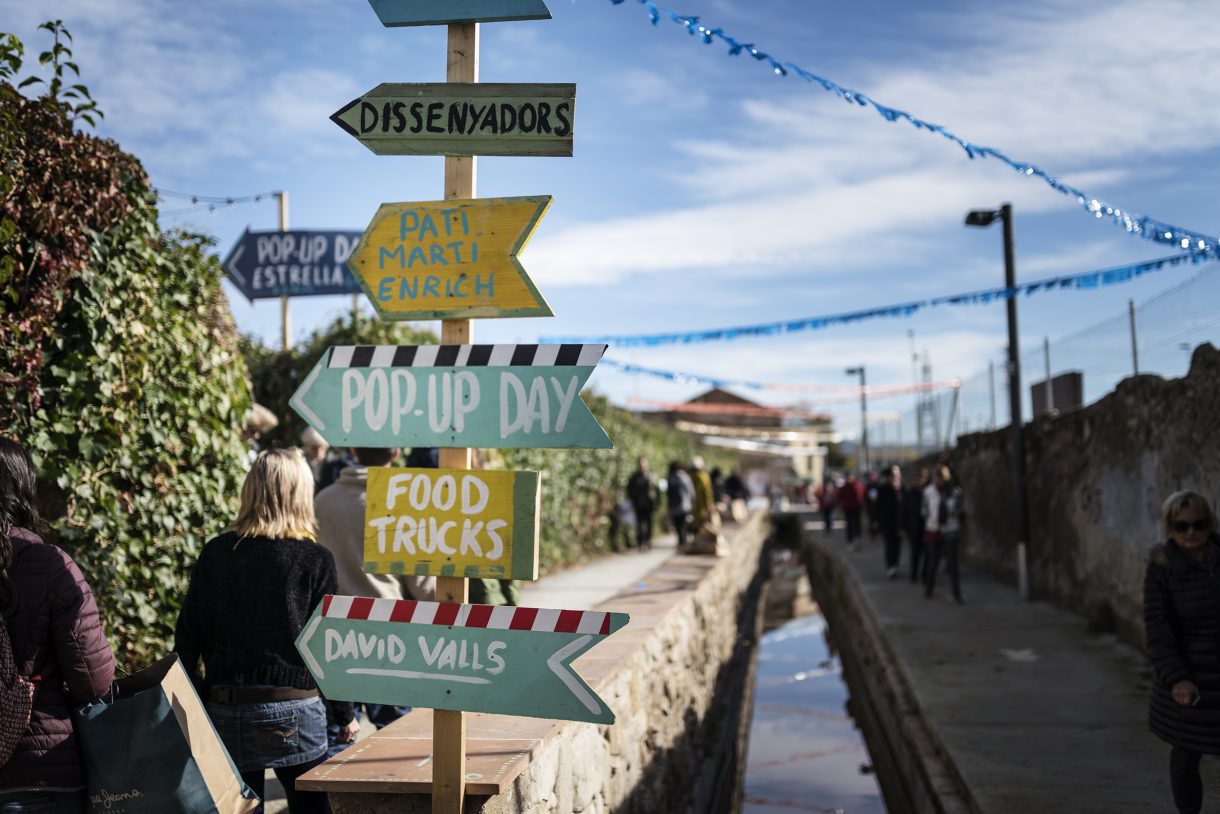
 We often focus on fashion shows as a centre of analysis of the latest trends in colour and trend-setting fabrics, although we do not deny that it is on the red carpet of major events related to cinema, fashion or music where these trends crystallize, through impact looks that also influence what will be worn during one season or another. These costumes or dresses worn by the artists of the moment are not chosen at random – or not at all – but are also part of the machinery of the industry itself in order to define the main features of the season. Designers choose, celebrities wear thelook and consumers buy. Everyone plays a role in this ephemeral sector.
We often focus on fashion shows as a centre of analysis of the latest trends in colour and trend-setting fabrics, although we do not deny that it is on the red carpet of major events related to cinema, fashion or music where these trends crystallize, through impact looks that also influence what will be worn during one season or another. These costumes or dresses worn by the artists of the moment are not chosen at random – or not at all – but are also part of the machinery of the industry itself in order to define the main features of the season. Designers choose, celebrities wear thelook and consumers buy. Everyone plays a role in this ephemeral sector.



































 The retail sale revolution
The retail sale revolution





































